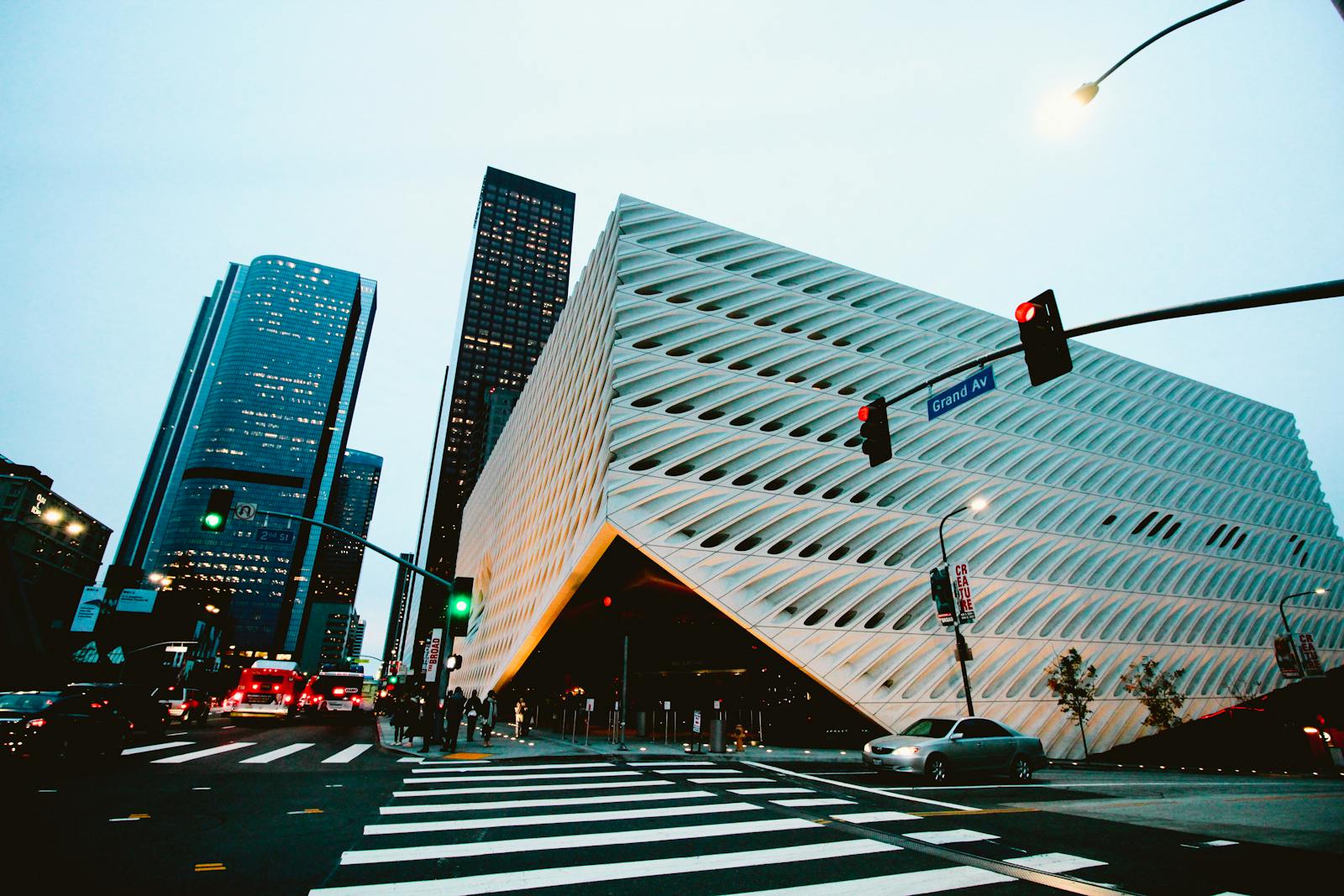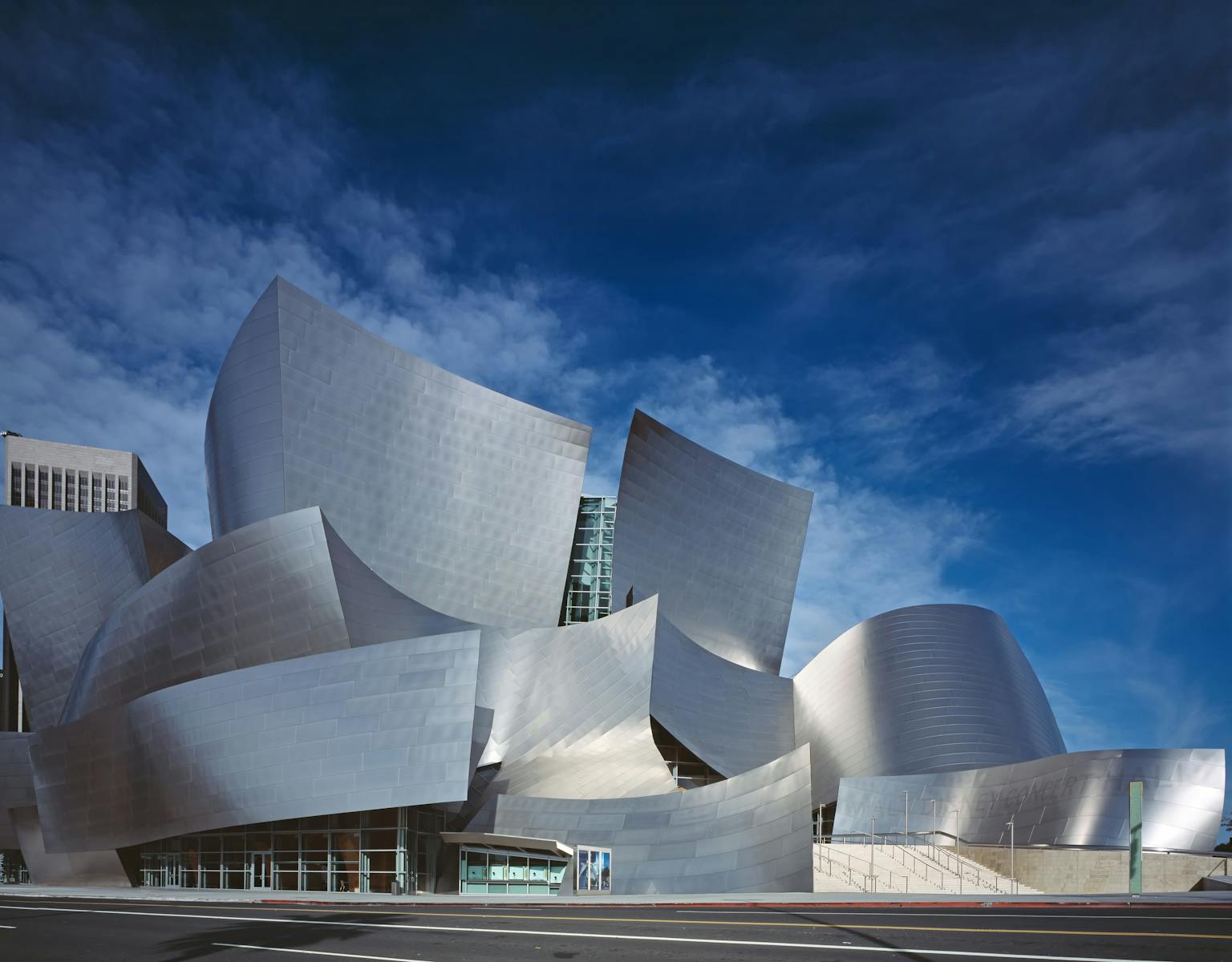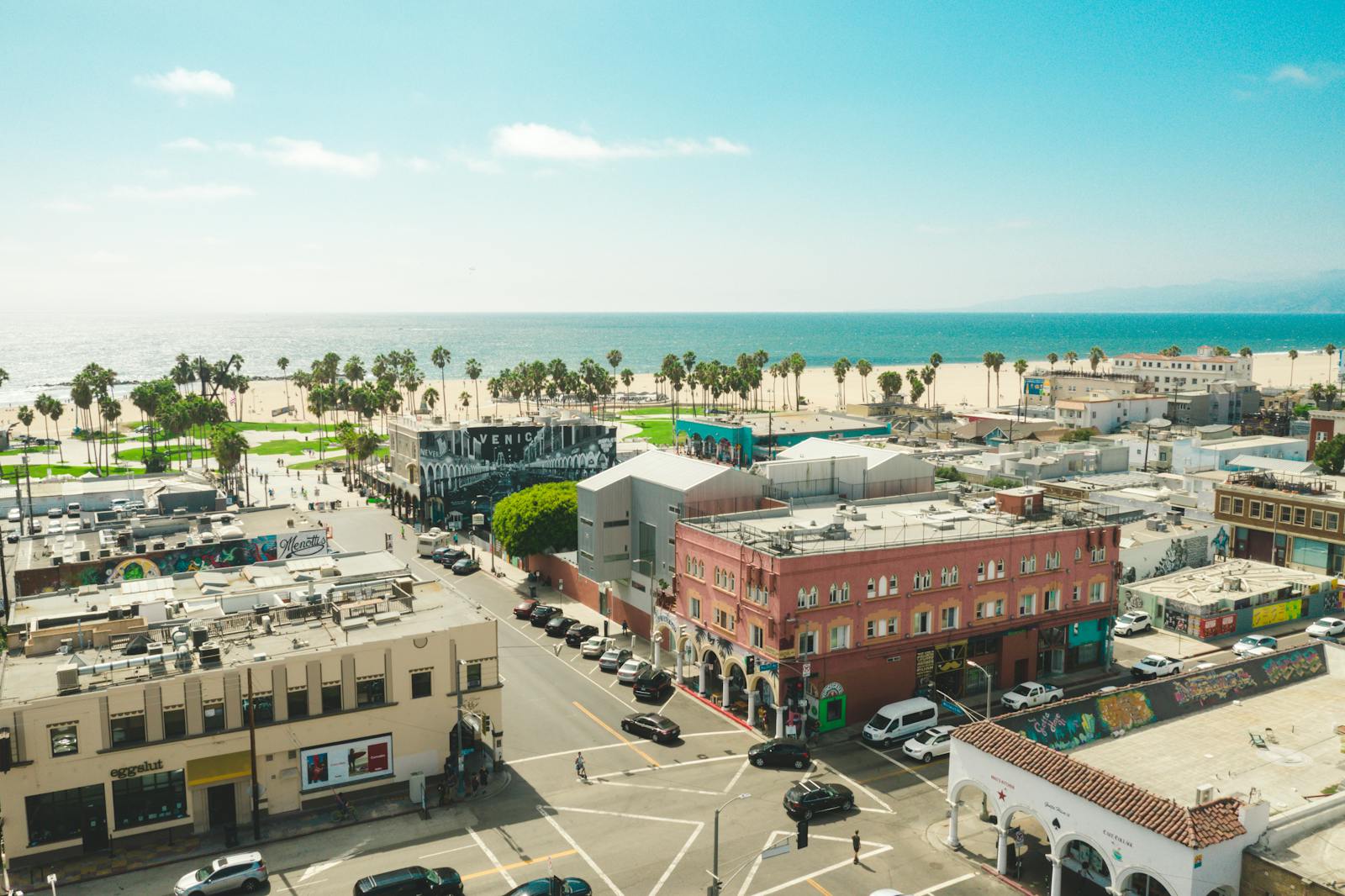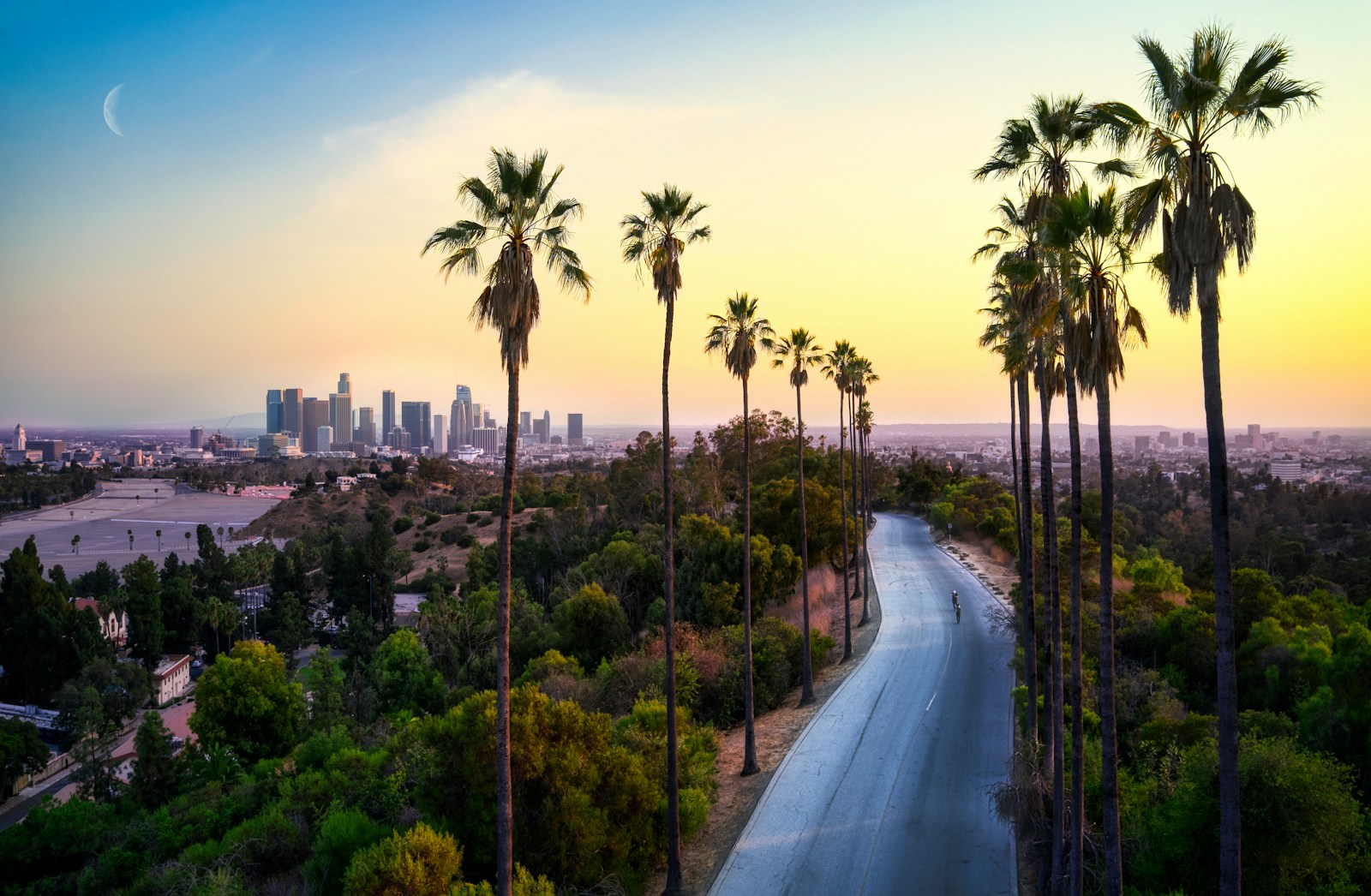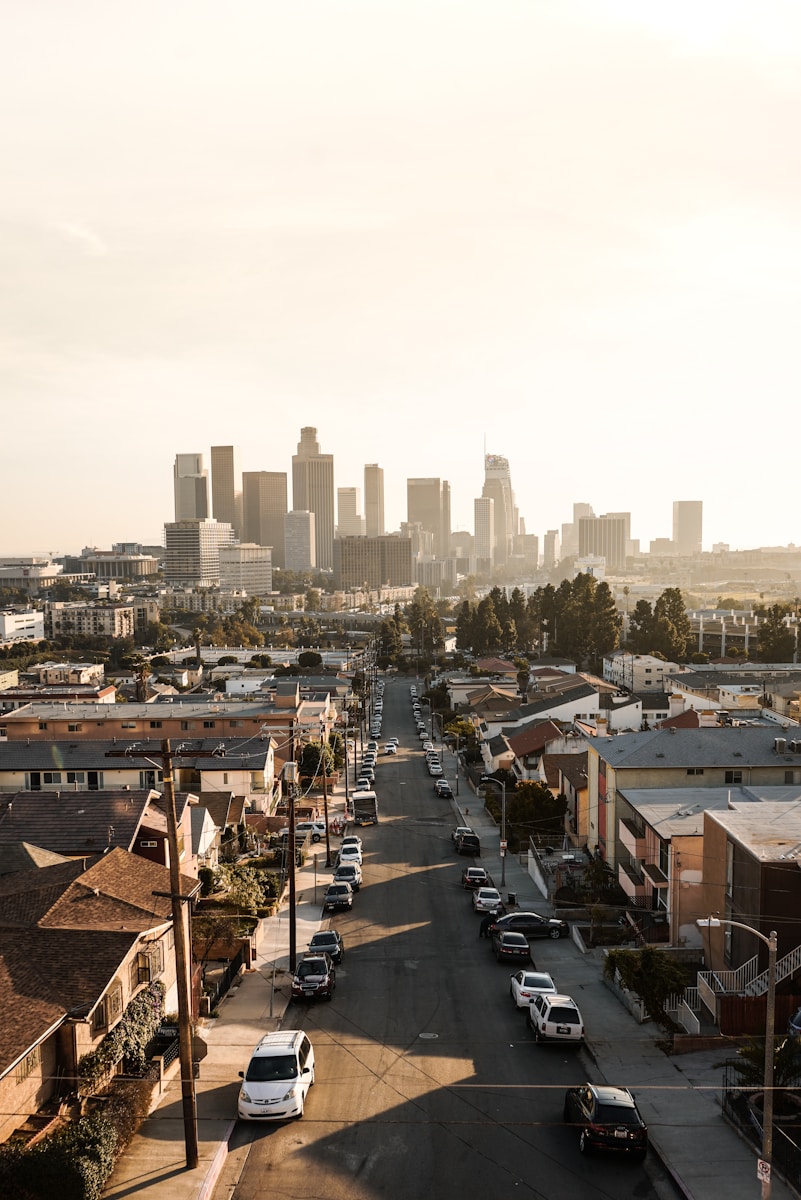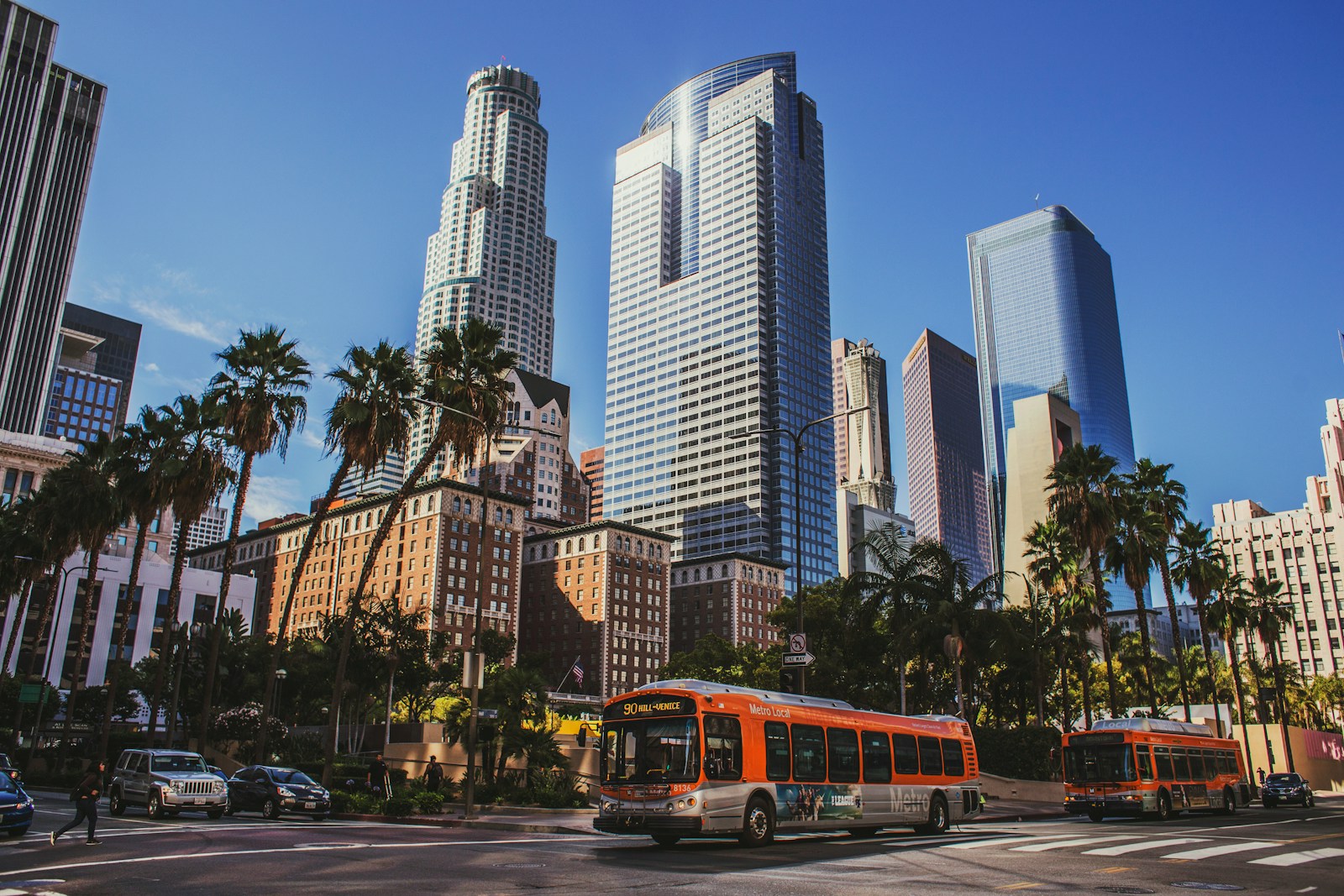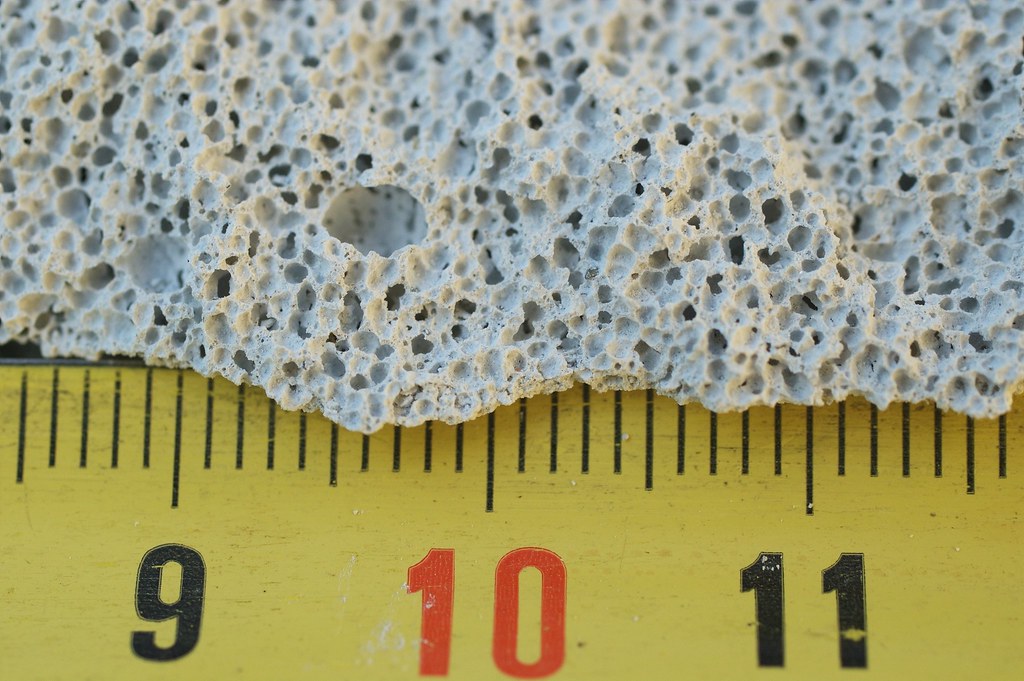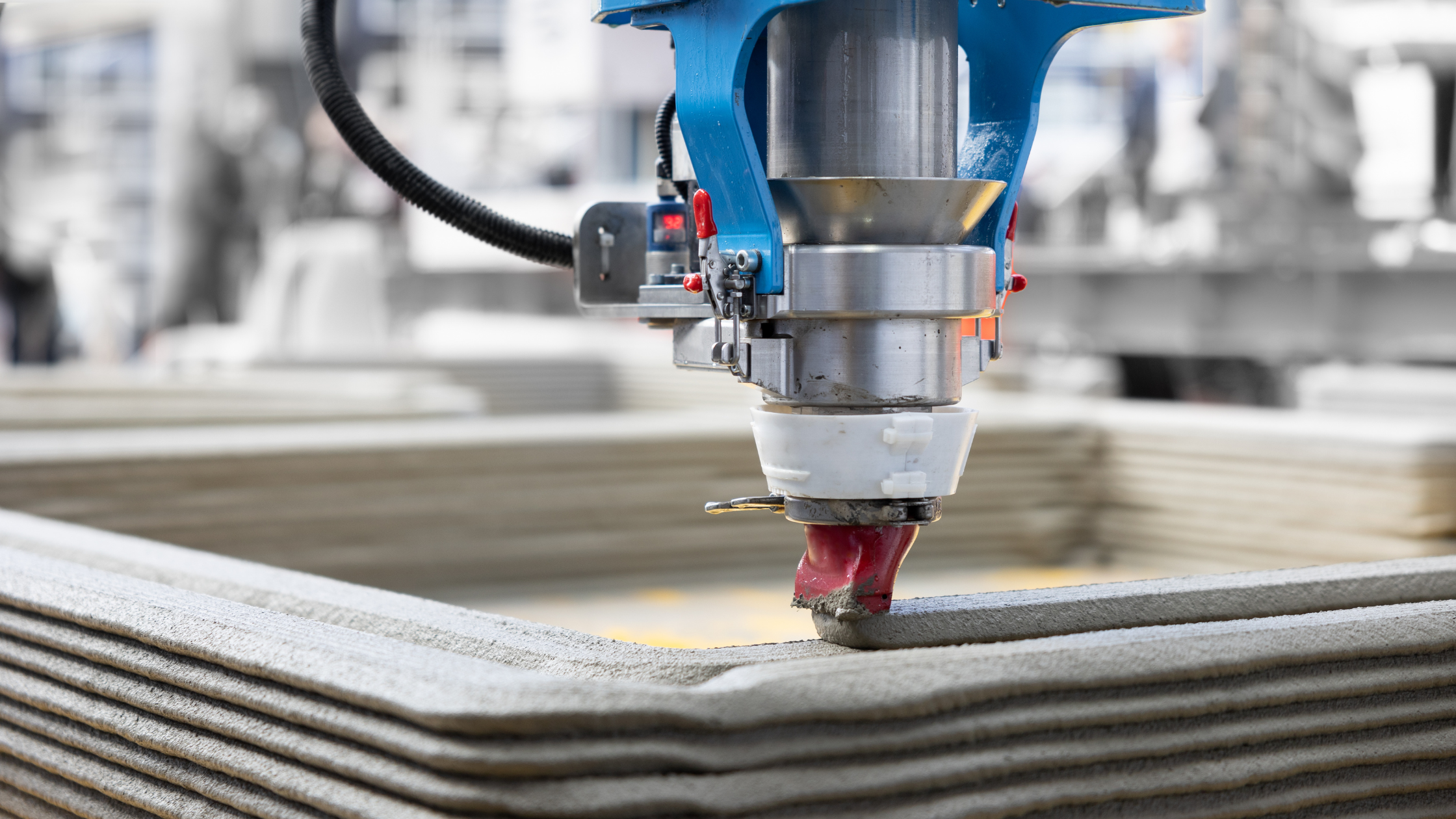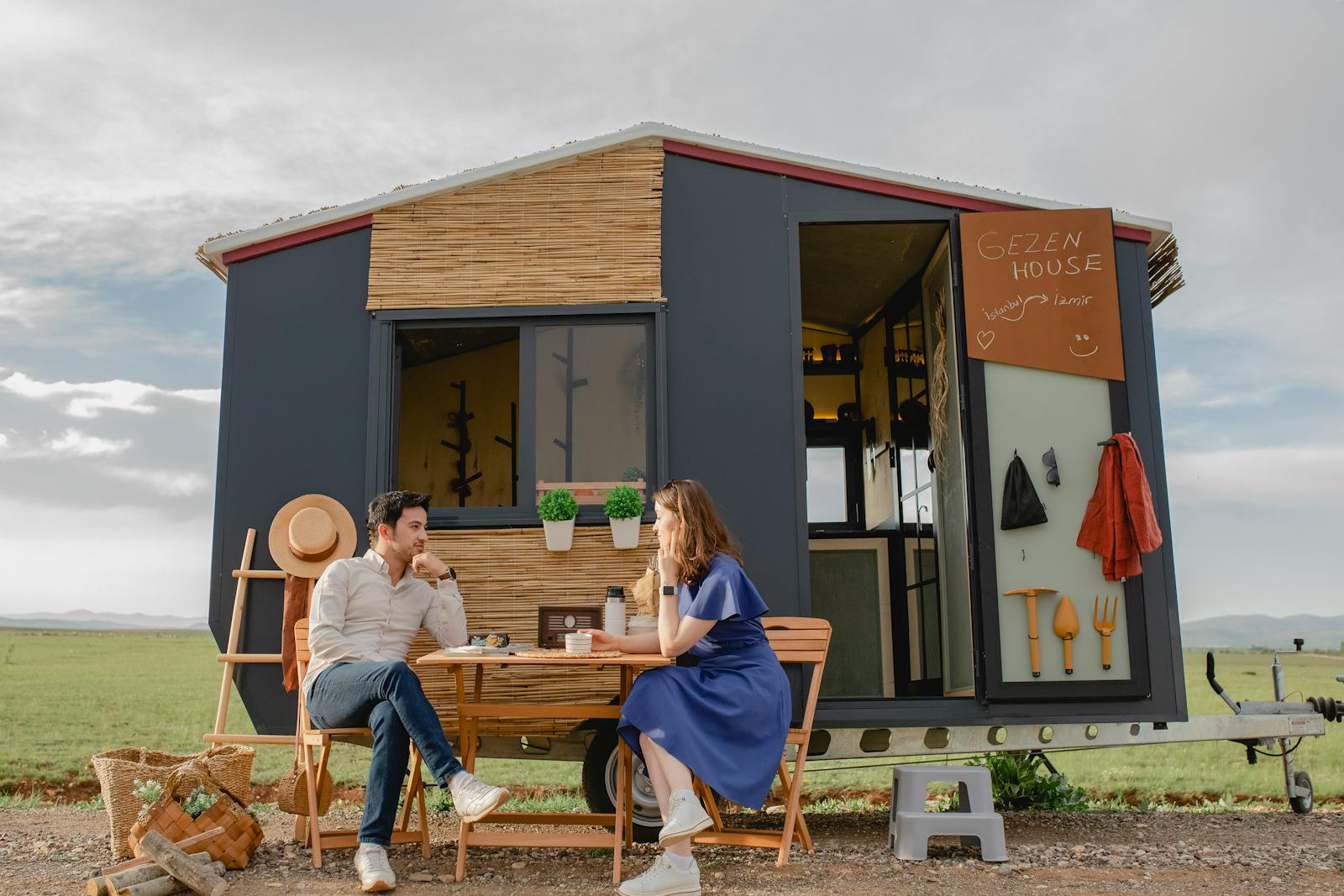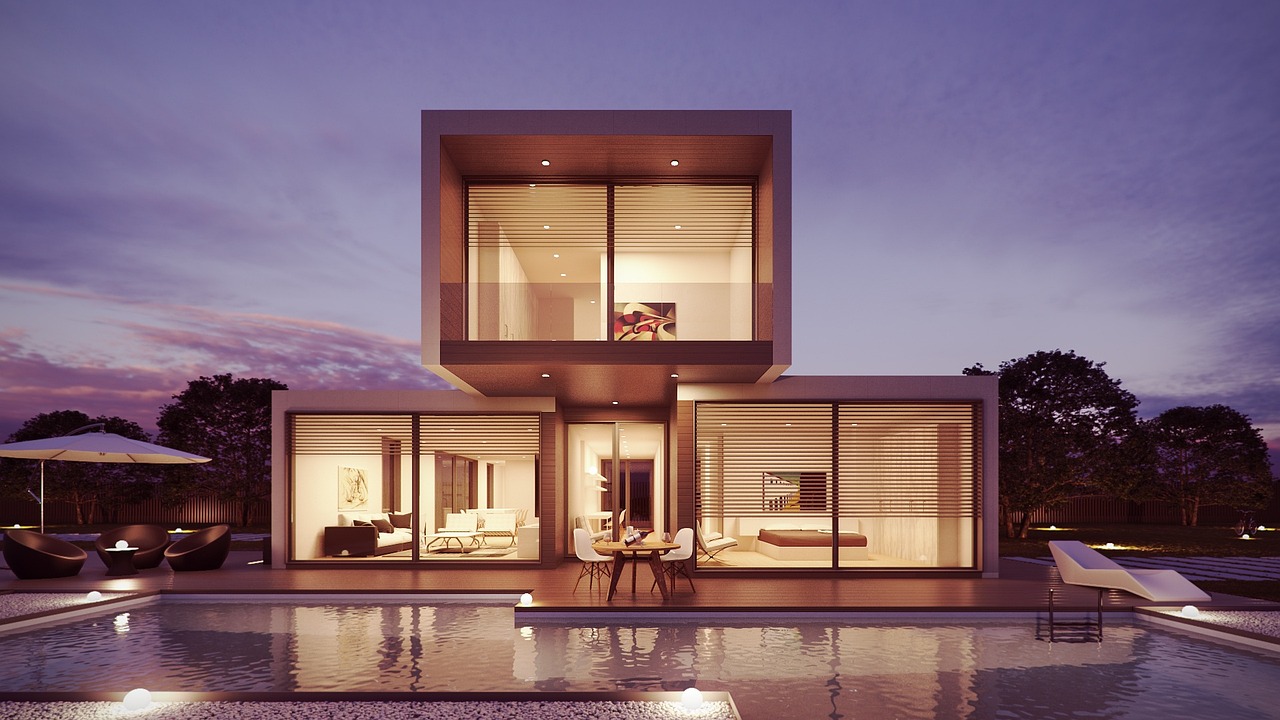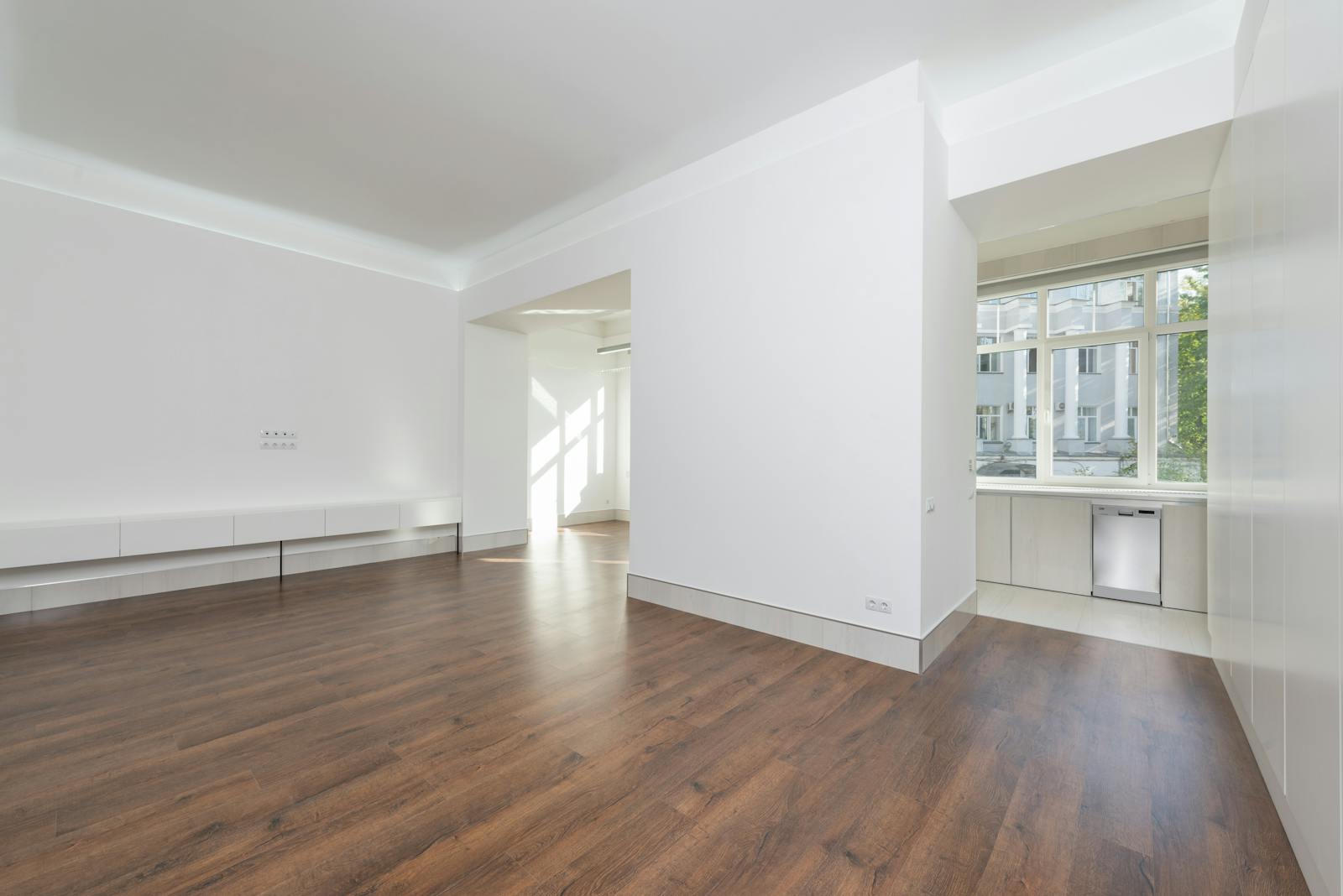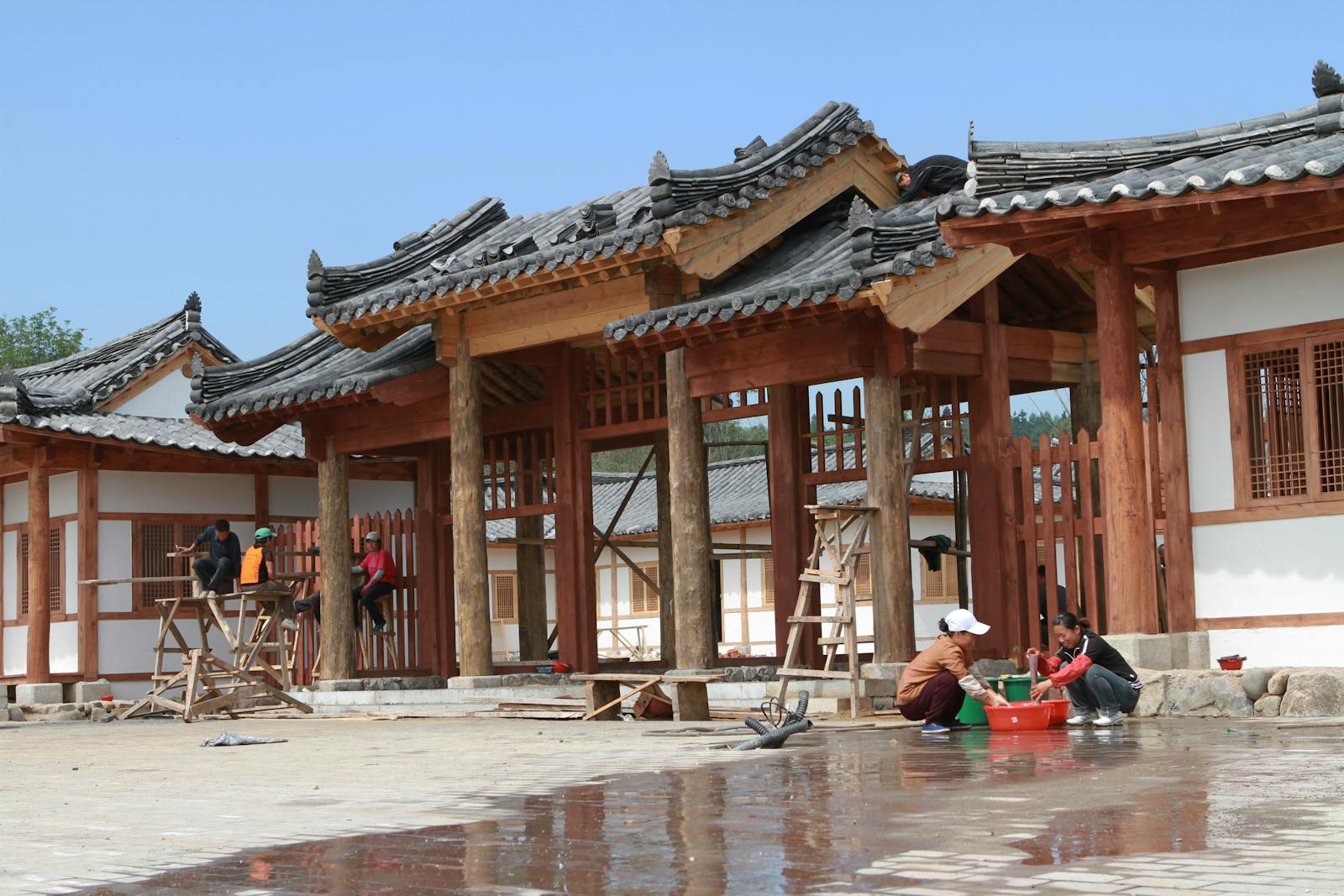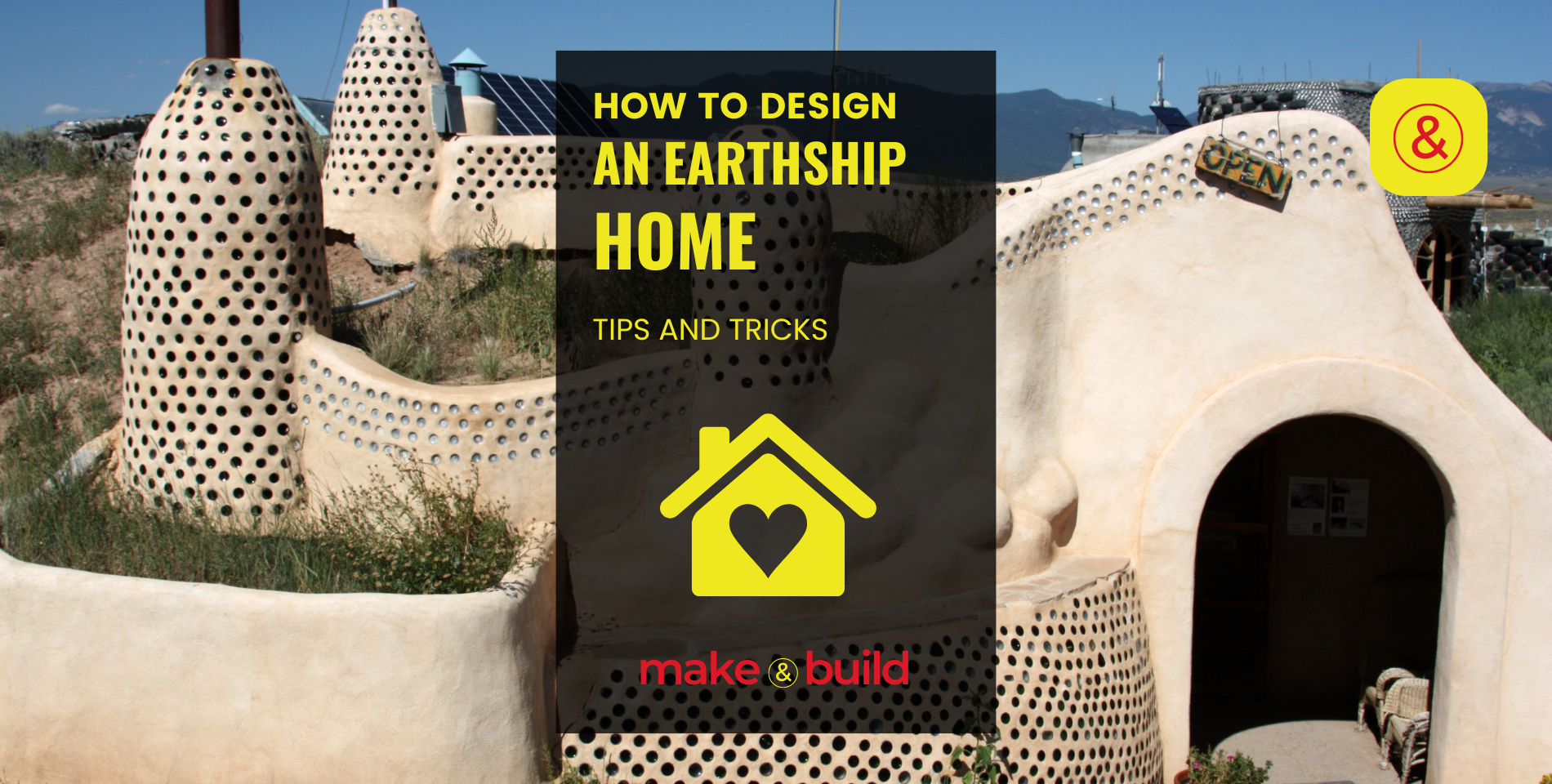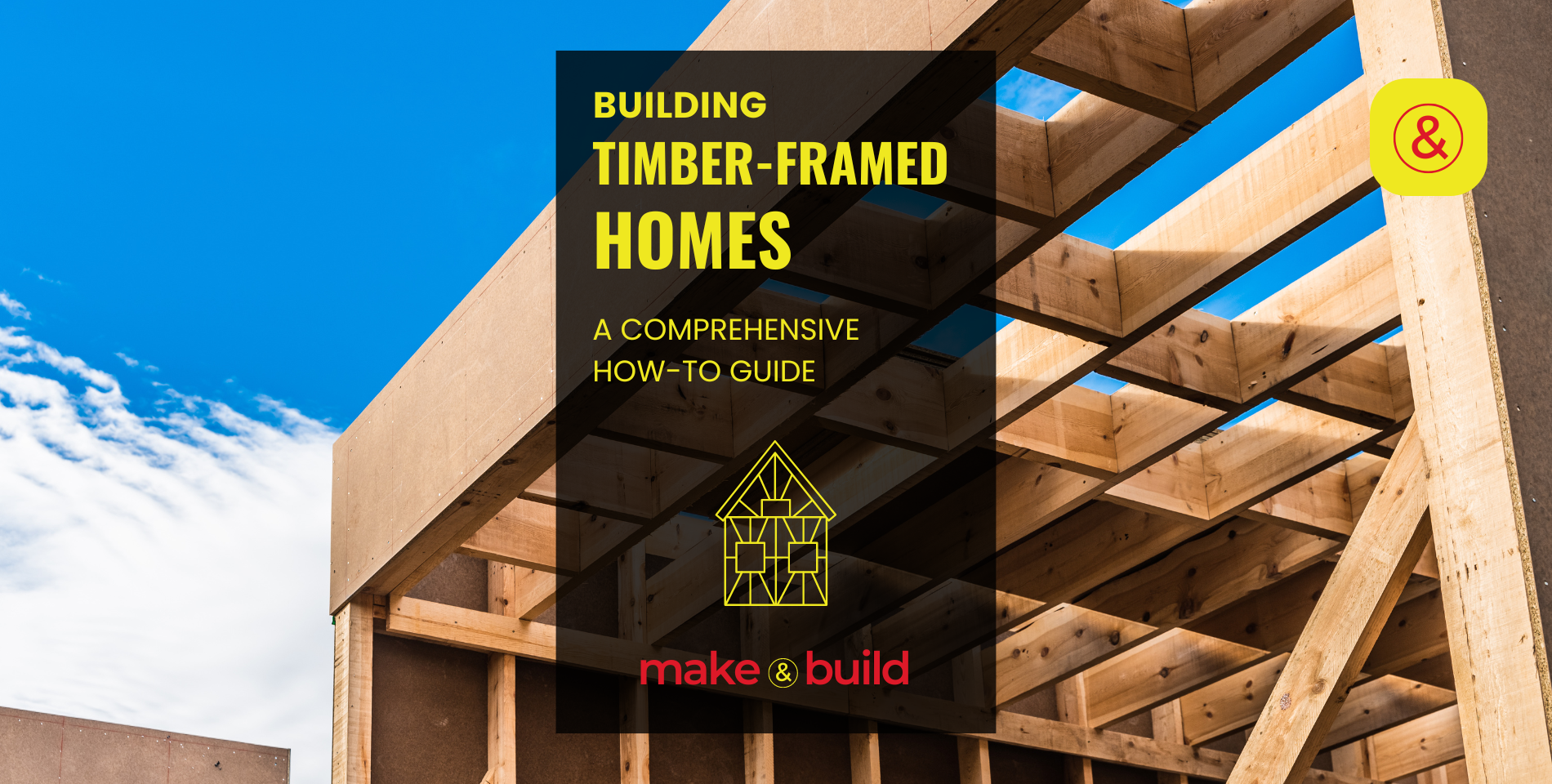Building in Los Angeles, California, USA
Los Angeles is a high-demand construction market with strict seismic regulations, high costs, and strong sustainability initiatives. Builders must navigate zoning laws, earthquake-resistant designs, and environmental mandates, but the investment potential remains strong due to continued urban growth and high housing demand
Building in Los Angeles, California, USA
Los Angeles is a high-demand construction market with strict seismic regulations, high costs, and strong sustainability initiatives. Builders must navigate zoning laws, earthquake-resistant designs, and environmental mandates, but the investment potential remains strong due to continued urban growth and high housing demand.
Los Angeles Building Insights
- Scores
- Building Insights
- Photos
- Video
- Building Costs & Affordability
- Zoning & Land Use Regulations
- Infrastructure Readiness
- Climate & Environmental Factors
- Sustainability & Green Building
- Construction Workforce
- Investment & Development Potential
- Permitting & Bureaucratic Hurdles
- Seismic, Flood & Disaster Resilience
- Urban Expansion vs. Rural Development
- Top Construction Methods Used in the City
✅ Overall City Development Score
🏛️ Ease of Building Permits & Regulations Score
📍 Zoning Flexibility Score
🏢 Land Availability Score
👷 Construction Workforce Availability Score
🪵 Material Accessibility Score
🔌 Infrastructure Readiness Score
💰 Cost of Construction Score
⏳ Project Completion Speed Score
🌡️ Climate Adaptability Score
🌪️ Extreme Weather Risk Score
💨 Air Quality Score
🚰 Water Availability & Quality Score
🏗️ Soil Stability Score
🌱 Sustainability & Green Building Score
🏦 Real Estate Investment Potential Score
📊 Cost of Living Score
📈 Property Value Growth Score
📝 Taxation & Development Incentives Score
🏢 Business & Commercial Growth Score
🚇 Transportation & Public Transit Score
⚡ Utility & Energy Reliability Score
📡 Smart City & Technology Integration Score
🚶 Walkability & Accessibility Score
🏗️ Urban Density & Space Efficiency Score
🛡️ Safety & Crime Rate Score
🎓 Education & Workforce Training Score
🏥 Healthcare & Emergency Services Score
🏡 Community Development & Livability Score
🚀 Future Growth Potential Score
📖 City Building Overview:
Los Angeles is one of the most dynamic construction markets in the United States, driven by real estate demand, economic growth, and strict building codes. With its Mediterranean climate, earthquake-prone terrain, and expanding urban landscape, builders must carefully select materials, construction methods, and energy-efficient solutions.
Strict seismic building codes require reinforced structures, making concrete, steel, and modular prefabrication some of the best methods for construction. Sustainability efforts in Los Angeles are strong, with tax incentives for green buildings, solar energy integration, and LEED certification programs.
Despite its high construction costs ($250 – $500 per sq. ft.), Los Angeles remains a prime location for development, particularly in urban infill projects, multi-family housing, and commercial real estate. Navigating zoning laws and permit approvals can be complex, but the long-term investment outlook remains highly favorable.
City Name 🏙️
Country 🌍
United States
Latitude & Longitude 📍
34.0522° N, -118.2437° W
Latitude & Longitude 📍
Climate & Weather Considerations ☀️🌧️
Dry, Mediterranean climate with mild winters and hot, dry summers.
Nearby Parks and Attractions 🌅
Los Angeles offers a mix of beaches, urban parks, scenic trails, and cultural landmarks. Explore Griffith Park, Runyon Canyon and Santa Monica Mountains for outdoor adventures, hiking, and breathtaking city views.
Best Construction Methods for the City 🏗️
Earthquake-resistant traditional framing, reinforced concrete, modular prefab, and 3D printing.
Local Building Regulations & Permits 📜
Strict seismic codes, sustainability mandates, and a complex permit approval process.
Water Management & Tap Water Quality 💧
Zoning & Land Use Restrictions 🏢
Mixed-use zoning is expanding; high restrictions on urban density in certain areas.
Farming & Gardening Potential 🌱
Los Angeles supports year-round urban farming, vertical gardens, and drought-resistant landscaping, but water restrictions make efficient irrigation essential. 🌱 Discover the best gardening strategies for LA at RootJoy, or check out Los Angeles Gardening!
Availability of Construction Materials 🏗️
Easy access to concrete, steel, and prefab materials; lumber prices fluctuate.
City Sustainability 🌍
Los Angeles is making strides in sustainability with widespread solar energy adoption, green building incentives, and urban reforestation efforts. 🌍 Explore how cities worldwide are advancing sustainability at Sustainable World! Check out Los Angeles Sustainability
Cost of Construction Per Square Foot 💰
$250 – $500 per sq. ft. depending on location and project type.
Workforce & Skilled Labor Availability 👷
High; large construction workforce but high labor costs due to demand.
Sustainability & Green Building Initiatives 🌱
Strong; incentives for LEED-certified buildings, solar panels, and water conservation.
Infrastructure & Utilities Access ⚡
Reliable; strong electrical grid, water supply, and public transit in major areas.
Resilience to Natural Disasters 🌪️
High earthquake risk, moderate wildfire and flood risk, but minimal hurricane exposure.
Investment & Development Opportunities 📈
High; strong real estate market, high rental demand, and ongoing urban expansion.
Urban vs. Rural Development Suitability 🌆🏡
Best for high-density urban infill projects and suburban residential developments.
Government Incentives & Grants 💸
Tax credits for solar, energy-efficient retrofits, and earthquake-resistant construction.
Building Insights & Key Facts 🔍
Los Angeles is one of the most expensive cities to build in, requiring strict compliance with seismic safety laws and energy codes. Prefabricated and modular construction is gaining traction to offset costs.
City Development Score 📊
78/100 (Strong market but high costs and strict regulations).
💰 Building Costs & Affordability in Los Angeles, California
Los Angeles is one of the most expensive cities in the U.S. to build in, with high material costs, skilled labor shortages, complex permitting processes, and strict building codes all contributing to steep construction expenses. Whether developing single-family homes, high-rise apartments, or commercial buildings, builders must navigate high land prices, regulatory fees, and environmental compliance costs, making affordability a major challenge.
🏗️ Average Construction Costs in Los Angeles
Construction costs in Los Angeles vary depending on project type, location, and material selection. Below are the estimated costs per square foot (sq ft) for different building types:
| Building Type | Low-End ($/sq ft) | High-End ($/sq ft) | Average ($/sq ft) |
|---|---|---|---|
| Single-Family Home | $250 | $600 | $400 |
| Luxury Custom Home | $500 | $1,200+ | $750 |
| Multifamily Apartment (Low-Rise) | $300 | $600 | $450 |
| Multifamily Apartment (High-Rise) | $450 | $900+ | $650 |
| Commercial Office Building | $350 | $800 | $550 |
| Retail / Mixed-Use | $300 | $750 | $500 |
| Affordable Housing | $250 | $450 | $350 |
💡 Compared to national averages, construction costs in LA are significantly higher, making affordability a key concern for developers.
🏠 Factors Driving Up Construction Costs in Los Angeles
1️⃣ 🏗️ High Land & Property Costs
- Land in LA is limited and expensive, often costing millions per acre in prime areas.
- Densely populated neighborhoods require demolition or redevelopment, adding extra costs.
2️⃣ 👷 Skilled Labor Shortages & High Wages
- Union labor rates & skilled worker shortages drive up wages.
- General contractors, electricians, and plumbers command some of the highest wages in the country.
- Delays in labor availability can increase project timelines and costs.
3️⃣ 📜 Permitting Fees & Development Impact Costs
- Building permit fees in LA can range from $10,000 to over $50,000 per project.
- Zoning variances, environmental impact reports (EIRs), and other compliance costs can add months of delays and thousands in additional fees.
4️⃣ 🌱 Sustainability & Green Building Requirements
- California’s Title 24 energy standards require high-efficiency HVAC, solar readiness, and strict insulation rules, increasing costs.
- Water conservation measures (low-flow fixtures, drought-resistant landscaping) add to building expenses.
- Mandatory seismic safety measures drive up costs for high-rise and commercial buildings.
5️⃣ 🏗️ Material Costs & Supply Chain Challenges
- Lumber, steel, concrete, and other materials cost more due to supply chain delays and high demand.
- Import tariffs and transportation costs increase pricing on key building materials.
💡 The combination of high labor costs, expensive land, and regulatory challenges makes LA one of the costliest cities for construction.
🏡 Affordable Housing Challenges & Solutions
Despite high construction costs, Los Angeles has a severe housing shortage, leading to policy initiatives and funding incentives for affordable housing development.
⚠️ Key Challenges in Affordable Housing Development
- Long approval processes slow down new housing projects.
- Land use restrictions & zoning laws limit where affordable housing can be built.
- Rising costs make it difficult to build low-cost housing at scale.
✅ Solutions & Incentives for More Affordable Housing
- Density bonuses & expedited permitting for developers who include affordable units.
- State & federal funding (LIHTC, California HCD grants, and city-sponsored programs).
- Adaptive reuse & modular construction to reduce costs and speed up development.
💡 Los Angeles is investing in affordable housing initiatives, but high costs still make widespread affordability a challenge.
📊 Building Cost & Affordability Score Breakdown (0-100)
| Category | Score | Notes |
|---|---|---|
| Overall Construction Cost | 40 | Among the highest in the U.S. |
| Land & Property Prices | 30 | Extremely high cost of land in LA. |
| Labor & Wage Costs | 45 | Union wages and skilled worker shortages increase costs. |
| Permitting & Development Fees | 35 | Expensive and time-consuming. |
| Sustainability & Green Building Costs | 50 | Necessary but adds to upfront costs. |
| Affordable Housing Feasibility | 55 | Some incentives, but high costs limit development. |
💡 Final Verdict: Is Building in Los Angeles Affordable?
✔️ LA is one of the most expensive cities to build in due to high land, labor, and regulatory costs.
✔️ Developers must factor in long permitting timelines, sustainability mandates, and premium material pricing.
✔️ Affordable housing incentives exist but are limited in impact due to overall cost constraints.
✔️ Alternative construction methods (modular, prefab, 3D printing) may offer solutions but are not yet widespread.
🚀 For investors and builders, LA presents both high costs and high rewards—navigating the market effectively requires strong financial planning and strategic land acquisition.
📜 Zoning & Land Use Regulations in Los Angeles, California
Los Angeles has one of the most complex zoning and land use regulatory systems in the U.S., designed to balance urban development, environmental sustainability, and historic preservation. These regulations control what types of buildings can be constructed, where they can be built, and how they impact surrounding communities. Navigating LA’s zoning laws, permit processes, and land use policies is a critical step for developers and builders.
📍 Understanding Zoning in Los Angeles
The Los Angeles Zoning Code determines what can be built on a given property. It divides the city into various zones, each with specific rules for residential, commercial, industrial, and mixed-use developments.
🏗️ Key Zoning Classifications in LA
✅ R1 (Single-Family Residential) – Standard suburban-style housing, restricted to one dwelling per lot.
✅ R2 & RD (Multi-Family Residential & Duplexes) – Allows for duplexes, townhomes, and small apartment buildings.
✅ R3, R4, R5 (Higher-Density Residential) – Allows for mid-rise and high-rise apartment buildings.
✅ C1, C2, C3 (Commercial Zoning) – Retail, office spaces, mixed-use developments.
✅ M1, M2 (Industrial & Manufacturing) – Warehouses, factories, and commercial production spaces.
✅ Mixed-Use & Transit-Oriented Zones – Allow for live-work spaces, apartments, and retail near public transportation.
💡 Zoning restrictions impact what developers can build, often requiring variances or zoning changes to proceed with major projects.
📜 Land Use Restrictions & Challenges
In addition to zoning, LA’s land use policies regulate density, building heights, parking requirements, and sustainability measures. Developers must ensure compliance with height restrictions, set-back rules, and urban density regulations.
⚠️ Common Land Use Restrictions
- Height Limits & Setback Requirements – Buildings cannot exceed height restrictions in residential areas, and setbacks must be maintained for pedestrian-friendly streets.
- Parking Minimums – Many developments require a certain number of parking spaces per unit or business, adding costs and limiting density.
- Historic Preservation & Protected Areas – Some neighborhoods and buildings have protected status, requiring additional approvals before redevelopment.
- Low-Density Housing Policies – Many areas are still restricted to single-family homes, limiting housing supply and increasing real estate prices.
💡 Zoning laws make high-density development challenging in many parts of LA, contributing to the housing shortage.
🚦 Zoning Approvals & Variance Process
For projects that do not comply with existing zoning, developers must apply for a zoning variance, conditional use permit (CUP), or request a zoning change. This can take months or even years due to public hearings, environmental impact studies, and city approvals.
📑 Steps in the Zoning & Approval Process
1️⃣ Pre-Application & Site Plan Review – Developers submit initial plans to the Department of City Planning.
2️⃣ Community & Public Hearings – Local residents and neighborhood councils review the proposal.
3️⃣ Environmental Impact Report (EIR) Review – Required for larger projects to assess traffic, pollution, and sustainability impacts.
4️⃣ Zoning Change or Variance Request – Developers must prove that their project aligns with LA’s long-term development goals.
5️⃣ City Council Approval – Final decision is made, and approved projects move forward to permitting.
💡 Zoning approvals in LA are often slow and require extensive documentation, making them a major hurdle for developers.
🌱 Sustainability & Density Initiatives
Los Angeles is shifting toward higher-density, transit-oriented, and sustainable development policies to address its housing crisis and environmental concerns.
✅ Recent Zoning Reforms & Development Incentives
- 🏢 Density Bonuses – Developers can build taller buildings with more units if they include affordable housing.
- 🚆 Transit-Oriented Communities (TOC) Program – Encourages mixed-use and high-density housing near Metro stations.
- 🌱 Green Building Mandates – Projects must comply with California’s Title 24 energy efficiency regulations.
- 🏠 ADU Expansion (Accessory Dwelling Units) – Allows homeowners to build granny flats, guest houses, or small rentals on existing properties.
💡 These initiatives are aimed at making housing more affordable and sustainable, but zoning laws still create challenges for large-scale developments.
📊 Zoning & Land Use Regulation Score Breakdown (0-100)
| Category | Score | Notes |
|---|---|---|
| Ease of Zoning & Approvals | 50 | Lengthy process, often requiring variances. |
| Flexibility for Multi-Use Development | 65 | Mixed-use zoning exists but is restricted in many areas. |
| Transit-Oriented & High-Density Development | 75 | Incentives exist, but local opposition slows down projects. |
| Sustainability & Green Building Regulations | 80 | Strong incentives for energy-efficient construction. |
| Single-Family Housing Restrictions | 45 | Many areas still prohibit multi-family development. |
💡 Final Verdict: How Zoning & Land Use Affect Development in LA
✔️ LA’s zoning laws are complex, favoring single-family homes in many areas while restricting high-density growth.
✔️ New policies encourage sustainable and transit-oriented development, but approval timelines are slow.
✔️ Developers often face long wait times for variances and zoning changes, increasing costs and uncertainty.
✔️ Green building incentives exist but add regulatory hurdles for construction.
🚀 For developers, Los Angeles offers huge opportunities, but understanding the zoning laws and navigating the land use regulations is critical for success.
-
Los Angeles City Planning – Zoning Information: This page offers comprehensive details on local zoning rules and regulations.
-
Zone Information and Map Access System (ZIMAS): An online mapping tool that displays zoning information for parcels within the City of Los Angeles.
-
Los Angeles County Planning – Land Use and Zoning: Provides insights into zoning categories and regulations within Los Angeles County.
-
Los Angeles Municipal Code – Chapter I (General Provisions and Zoning): The official legal text outlining zoning laws in Los Angeles.
-
Zoning Code Manual and Commentary: A detailed manual offering interpretations and summaries of zoning policies by the Los Angeles Department of Building and Safety.
🔌 Infrastructure Readiness in Los Angeles, California
Los Angeles has a highly developed but aging infrastructure system that supports its dense urban core, sprawling suburbs, and industrial zones. While the city boasts robust transportation networks, energy grids, water systems, and digital infrastructure, challenges such as traffic congestion, water shortages, and outdated utility networks impact large-scale construction and development projects.
🚧 Transportation & Road Infrastructure
Los Angeles is infamous for its traffic congestion, but its highway system, public transit, and evolving smart mobility solutions make it a key hub for construction and real estate investment.
🚦 Key Transportation Infrastructure Features
✅ Extensive highway system – Connected by major interstates like I-5, I-10, I-405, and US-101, supporting high-volume logistics and construction supply chains.
✅ Growing public transit network – The Metro Rail system (light rail, subway), Metrolink commuter trains, and expanding bus routes provide alternative transportation.
✅ Port of Los Angeles – One of the largest shipping hubs in the U.S., crucial for importing construction materials.
⚠️ Challenges & Development Constraints
- Severe traffic congestion increases commute times and logistics costs.
- Public transit limitations restrict accessibility for construction workers and labor forces.
- Ongoing infrastructure upgrades cause temporary disruptions to projects.
💡 Despite its traffic issues, LA’s transportation network supports a high level of construction activity, particularly near transit hubs and commercial corridors.
⚡ Energy & Utility Infrastructure
Los Angeles is served by a complex energy and utility grid, managed by LADWP (Los Angeles Department of Water and Power) and private energy providers. The city is a leader in renewable energy adoption, but infrastructure challenges such as blackouts, grid instability, and rising energy costs affect developments.
🔋 Key Features of LA’s Energy Infrastructure
✅ One of the largest municipal utility systems in the U.S., providing electricity, natural gas, and water.
✅ Strong focus on renewable energy – LA aims to be 100% carbon-neutral by 2045, increasing solar, wind, and hydroelectric energy adoption.
✅ Smart grid modernization – Efforts are underway to improve energy storage, efficiency, and resilience against climate-related disruptions.
⚠️ Challenges in Energy & Utility Readiness
- Aging electrical grid causes periodic blackouts, impacting construction timelines.
- Strict energy efficiency regulations increase compliance costs for builders.
- High electricity demand & rising costs add to operational expenses.
💡 Builders and developers must consider energy resilience strategies, such as on-site solar panels, battery storage, and high-efficiency HVAC systems.
🚰 Water Supply & Infrastructure
Water is one of the most critical infrastructure concerns in Los Angeles. The city relies heavily on imported water from the Colorado River, Owens Valley, and the California State Water Project, making it vulnerable to droughts and supply constraints.
💧 Water Infrastructure Features
✅ LADWP supplies water to over 4 million residents with a mix of local and imported sources.
✅ Reclaimed & recycled water projects help reduce dependency on external sources.
✅ Strict water conservation laws promote sustainable construction practices.
⚠️ Challenges with Water Infrastructure
- Frequent drought conditions require developers to comply with water-saving measures (low-flow plumbing, drought-resistant landscaping).
- Aging water pipes & distribution systems result in leaks and inefficiencies.
- New developments may require additional water rights or permits, especially for high-consumption projects.
💡 Sustainable water management is a key priority for LA, and developers must integrate water-efficient systems into their projects.
📡 Digital & Smart City Infrastructure
Los Angeles is at the forefront of smart city technology, integrating high-speed internet, 5G networks, and digital infrastructure to enhance real estate and business development.
🌐 Digital Infrastructure Features
✅ Expanding 5G network & fiber-optic broadband – Essential for smart homes, IoT (Internet of Things), and connected commercial buildings.
✅ Smart traffic & city planning initiatives – AI-driven traffic management reduces congestion and optimizes urban mobility.
✅ High-tech real estate development incentives – Tax benefits for integrating smart building features like automated energy systems and security tech.
⚠️ Challenges in Digital Readiness
- Unequal internet access – Some low-income and suburban areas lack high-speed broadband.
- Regulatory hurdles for new tech – Smart infrastructure projects must comply with strict zoning and data privacy laws.
- Cybersecurity concerns – Growing reliance on digital systems increases risks of cyberattacks.
💡 Developers should incorporate smart building technology, energy-efficient automation, and high-speed connectivity to enhance property value and appeal.
📊 Infrastructure Readiness Score Breakdown (0-100)
| Category | Score | Notes |
|---|---|---|
| Road & Highway Infrastructure | 85 | Strong road networks, but traffic congestion is a major issue. |
| Public Transit Accessibility | 75 | Growing Metro system, but still car-dependent. |
| Energy Grid Reliability | 70 | Transitioning to renewables, but aging grid causes blackouts. |
| Water Supply & Availability | 60 | Reliant on imported water, vulnerable to droughts. |
| Digital & Smart City Infrastructure | 80 | Expanding 5G, fiber optics, and smart planning initiatives. |
💡 Final Verdict: How Infrastructure-Ready is Los Angeles?
✔️ LA has one of the most developed transportation and energy infrastructures in the U.S., but aging systems and high demand present challenges.
✔️ Traffic congestion remains a major obstacle, despite investments in public transit and smart mobility solutions.
✔️ Water availability and sustainability measures are crucial for developers, requiring conservation-focused design choices.
✔️ The city is rapidly advancing in smart city technologies, offering opportunities for high-tech and energy-efficient developments.
🚀 For developers, understanding LA’s infrastructure strengths and weaknesses is key to successful planning, cost management, and project execution.
🌎 Climate & Environmental Factors in Los Angeles, California
Los Angeles has a Mediterranean climate characterized by hot, dry summers and mild, wet winters. While its weather is generally favorable for year-round construction, the city faces significant environmental challenges, including air pollution, water scarcity, extreme heat, and wildfire risks. These factors greatly impact building design, energy efficiency, and sustainability regulations, requiring developers to adapt construction methods to the local climate conditions.
☀️ Temperature & Seasonal Variability
Los Angeles experiences warm, dry summers with temperatures frequently exceeding 90°F (32°C), especially in inland areas, while winters are mild, ranging from 50°F to 70°F (10°C to 21°C).
🌡️ Key Climate Considerations for Construction
✅ Heat-resistant materials – Roofing and exterior walls should reflect heat and prevent overheating.
✅ Cool roof & green building standards – Many areas require heat-reflective coatings to combat the urban heat island effect.
✅ Energy-efficient HVAC & insulation – Essential for maintaining indoor temperatures and reducing cooling costs.
💡 Developers must incorporate heat-resistant designs to minimize energy consumption and improve indoor comfort.
💨 Air Quality & Pollution Concerns
Los Angeles has historically struggled with poor air quality, largely due to vehicle emissions, industrial pollution, and seasonal wildfires. While air quality has improved in recent decades, ozone levels and smog continue to pose environmental and health risks.
💨 Air Quality Challenges for Construction
- Stricter air quality regulations – Developers must comply with California’s stringent emissions and ventilation requirements.
- Construction dust & emissions control – Requires dust suppression measures and low-emission building practices.
- HVAC filtration & indoor air quality – Air purification and high-efficiency filtration systems are increasingly mandated in new buildings.
💡 Sustainable building designs that incorporate air filtration, green spaces, and pollution-resistant materials help mitigate LA’s air quality issues.
🔥 Wildfire Risk & Fire-Resistant Construction
Los Angeles County has some of the highest wildfire risks in the U.S., particularly in hillside and suburban areas like Malibu, Topanga, and Griffith Park. Wildfires are fueled by dry vegetation, high winds, and prolonged drought conditions.
🔥 Fire-Safe Construction Strategies
✅ Fire-resistant building materials – Non-combustible materials like concrete, stucco, and fire-treated wood are recommended.
✅ Defensible space requirements – Homes in wildfire-prone areas must have clear buffer zones with non-flammable landscaping.
✅ Mandatory sprinkler systems & ember-resistant vents – Reduce fire spread in residential and commercial properties.
💡 Wildfire-resistant construction is essential for developments in high-risk zones and is heavily regulated under California’s Wildland-Urban Interface (WUI) building codes.
🌊 Water Scarcity & Drought Conditions
Los Angeles relies on imported water from the Colorado River, Owens Valley, and Northern California, making it highly vulnerable to droughts and water shortages. Water conservation is a top priority, affecting landscaping choices, irrigation methods, and building efficiency standards.
💧 Water-Saving Construction Practices
✅ Low-flow plumbing fixtures & water recycling systems – Required in all new developments.
✅ Drought-resistant landscaping (xeriscaping) – Reduces outdoor water use.
✅ Rainwater harvesting & greywater reuse – Encouraged through rebates and sustainability incentives.
💡 New buildings must integrate water-efficient systems to comply with LA’s conservation mandates and reduce long-term operational costs.
🌪️ Earthquake Preparedness & Seismic Considerations
Los Angeles sits on the San Andreas Fault, making it one of the most earthquake-prone cities in the world. Strict seismic codes ensure that buildings can withstand tremors, but older structures may require retrofitting to meet modern safety standards.
🏗️ Seismic-Resistant Construction Features
✅ Flexible structural designs – Reinforced steel frames and shock-absorbing foundations prevent structural failure.
✅ Seismic retrofitting for older buildings – Required for many existing properties to comply with LA’s Mandatory Soft Story Retrofit Program.
✅ Base isolators & dampers – High-rise buildings use advanced engineering techniques to absorb seismic shocks.
💡 Seismic safety is a top priority in Los Angeles, and all new construction must meet earthquake-resistant standards.
📊 Climate & Environmental Impact Score Breakdown (0-100)
| Category | Score | Notes |
|---|---|---|
| Overall Climate Suitability for Construction | 80 | Year-round building is possible, but extreme heat requires adaptations. |
| Air Quality & Pollution Challenges | 60 | Air pollution and wildfire smoke impact urban development. |
| Wildfire Risk & Fire Safety | 50 | High-risk zones require special fire-resistant construction methods. |
| Water Scarcity & Conservation | 55 | Drought conditions require strict water management. |
| Seismic Resilience & Earthquake Readiness | 90 | LA has some of the best earthquake-resistant building codes in the world. |
💡 Final Verdict: How Climate-Ready is Los Angeles for Construction?
✔️ Los Angeles offers an ideal climate for year-round construction, but extreme heat, air pollution, and wildfire risks require special considerations.
✔️ Water scarcity and conservation mandates heavily influence building designs and landscaping choices.
✔️ Strict seismic safety regulations ensure buildings can withstand earthquakes, but compliance increases costs.
✔️ Green building strategies, fire-resistant materials, and water-saving technologies are essential for long-term sustainability.
🚀 Developers must plan for LA’s unique environmental challenges, balancing cost, efficiency, and regulatory compliance to ensure climate-resilient construction.
🌱 Sustainability & Green Building in Los Angeles, California
Los Angeles is at the forefront of sustainable construction and green building practices, driven by statewide energy efficiency laws, climate change initiatives, and a growing demand for eco-friendly development. The city enforces strict building codes, incentivizes renewable energy adoption, and promotes water conservation to combat its environmental challenges. Developers must integrate green materials, energy-efficient systems, and low-impact designs to comply with California’s stringent sustainability regulations.
♻️ Green Building Regulations & Sustainability Mandates
California has some of the strictest green building laws in the U.S., including:
🏛️ California Green Building Standards Code (CALGreen)
✅ Requires all new buildings to meet minimum sustainability standards.
✅ Mandates water-efficient plumbing, low-VOC materials, and waste reduction plans.
✅ Sets energy efficiency benchmarks for lighting, insulation, and HVAC systems.
💡 Title 24 Energy Efficiency Standards
✅ Enforces high-performance insulation and ventilation requirements.
✅ Mandates solar panel installations for new residential buildings.
✅ Encourages net-zero energy designs for commercial properties.
💡 Compliance with CALGreen and Title 24 is essential for all new developments in Los Angeles.
🔋 Renewable Energy & Energy Efficiency Initiatives
Los Angeles is transitioning toward a carbon-neutral future, with policies aimed at reducing emissions and increasing renewable energy adoption.
☀️ Solar Energy Integration
✅ Solar panels are mandatory for new residential constructions.
✅ Net metering programs allow homeowners to sell excess solar energy back to the grid.
✅ Battery storage solutions are encouraged to improve energy reliability.
🏡 Passive Design & High-Efficiency Buildings
✅ High-performance windows and thermal insulation reduce heating and cooling demands.
✅ Smart home automation optimizes energy use.
✅ Heat pumps and solar water heaters improve efficiency.
💡 Developers must integrate solar-ready designs and energy-efficient building materials to meet sustainability goals.
🚰 Water Conservation & Sustainable Landscaping
Los Angeles faces persistent droughts and water shortages, making water-efficient construction a top priority.
💧 Key Water Conservation Strategies
✅ Low-flow plumbing fixtures – Required for all new buildings.
✅ Greywater recycling systems – Reuses water for irrigation and landscaping.
✅ Xeriscaping & drought-resistant plants – Reduces outdoor water consumption.
✅ Rainwater harvesting – Encouraged for residential and commercial developments.
💡 Green infrastructure, such as permeable pavements and bioswales, is being integrated into new developments to improve stormwater management.
🌆 Sustainable Urban Development & Green Spaces
Los Angeles is prioritizing mixed-use, walkable developments to reduce reliance on cars, minimize emissions, and improve urban livability.
🌿 Key Sustainable Urban Planning Initiatives
✅ Transit-Oriented Developments (TODs) – Incentives for mixed-use projects near public transportation.
✅ Green roofs & vertical gardens – Improve air quality and building insulation.
✅ Bike-friendly infrastructure – Expanding protected lanes and pedestrian-friendly streets.
💡 Los Angeles is pushing for eco-friendly urban growth through sustainable transportation and green architecture.
🏗️ Sustainable Construction Materials & Waste Reduction
Building materials play a major role in reducing carbon emissions and improving energy efficiency.
♻️ Eco-Friendly Materials Commonly Used in LA Construction
✅ Cross-laminated timber (CLT) – Sustainable wood alternative for structural framing.
✅ Recycled concrete & steel – Reduces construction waste and carbon footprint.
✅ Non-toxic insulation (hempcrete, cellulose, wool) – Improves energy efficiency and indoor air quality.
💡 Builders are encouraged to use locally sourced and recycled materials to minimize environmental impact.
📊 Sustainability & Green Building Score Breakdown (0-100)
| Category | Score | Notes |
|---|---|---|
| Renewable Energy Adoption | 85 | LA leads in solar energy mandates but needs more grid storage. |
| Energy Efficiency Standards | 90 | Title 24 and CALGreen set high-performance benchmarks. |
| Water Conservation & Drought Readiness | 75 | Strong regulations, but water supply remains a concern. |
| Sustainable Urban Planning | 80 | Expanding transit-oriented, mixed-use developments. |
| Eco-Friendly Building Materials | 70 | Increasing adoption of low-carbon materials. |
💡 Final Verdict: How Sustainable is Building in Los Angeles?
✔️ LA is a leader in sustainable construction, with some of the strongest green building regulations in the U.S.
✔️ Developers must integrate solar energy, passive design, and high-efficiency materials to comply with codes.
✔️ Water conservation and drought-resistant design are crucial due to ongoing shortages.
✔️ Green urban planning and smart infrastructure are shaping LA’s future development trends.
🚀 Sustainability is no longer optional in Los Angeles—developers who prioritize energy efficiency, water conservation, and eco-friendly materials will benefit from regulatory incentives and long-term cost savings.
👷 Construction Workforce in Los Angeles, California
Los Angeles has one of the largest and most diverse construction workforces in the United States, with a high concentration of skilled labor, unionized trades, and specialized contractors. The city’s thriving real estate market, commercial developments, and infrastructure projects create steady demand for construction workers, but challenges like labor shortages, rising wages, and regulatory requirements impact project costs and timelines.
🏗️ Availability of Skilled Labor in LA
Los Angeles is home to a highly skilled construction workforce, with professionals specializing in residential, commercial, and high-tech building methods. The city’s strong union presence, particularly among carpenters, electricians, and plumbers, ensures high-quality labor but also raises project costs.
👷 Key Construction Trades in LA
✅ General Contractors – Oversee entire projects, ensuring compliance with codes and permits.
✅ Electricians & Plumbers – In high demand due to strict energy and water efficiency standards.
✅ Concrete & Steel Workers – Essential for seismic-resistant buildings.
✅ HVAC & Green Energy Specialists – Required for compliance with California’s Title 24 energy codes.
✅ Prefab & 3D Printing Technicians – Emerging trades as modular and automated construction methods gain traction.
💡 Los Angeles has a well-developed construction labor market, but the demand for skilled trades often outpaces supply, leading to higher costs and project delays.
📈 Labor Shortages & Rising Wages
While LA’s construction sector is robust, it faces labor shortages, especially in skilled trades and specialized construction techniques.
⚠️ Key Workforce Challenges
- Skilled labor shortage – Demand for electricians, HVAC specialists, and green building contractors exceeds supply.
- High labor costs – Union wages and rising demand drive up labor expenses.
- Aging workforce – Many skilled tradesmen are nearing retirement, with fewer younger workers entering the industry.
- Visa restrictions & immigration policies – Affects the availability of migrant workers who often fill essential construction roles.
💡 Developers face increasing labor costs and must plan for potential worker shortages when budgeting for projects.
📜 Union Influence & Labor Regulations
Los Angeles has a strong union presence, particularly through organizations like:
✅ International Brotherhood of Electrical Workers (IBEW) – Covers electricians and renewable energy technicians.
✅ Carpenters & Joiners Union – Represents carpenters, framers, and millworkers.
✅ Plumbers & Pipefitters Local 78 – Ensures high-quality plumbing installations.
✅ Laborers’ International Union (LiUNA) – Covers general laborers, concrete workers, and demolition crews.
While unions ensure fair wages and worker protections, they also increase project costs and limit non-union labor access. Many public and large-scale projects in LA require union labor, affecting construction timelines and overall budgets.
💡 Unionized labor results in high-quality work but increases project expenses and regulatory complexity.
🏗️ Construction Workforce Training & Apprenticeships
To address labor shortages, Los Angeles has expanded training programs and apprenticeships in high-demand construction trades.
🏫 Key Workforce Training Programs
✅ LA Trade-Technical College (LATTC) – Offers courses in construction technology, welding, and HVAC systems.
✅ California Apprenticeship Coordinators Association – Connects apprentices with skilled trade unions.
✅ Workforce Innovation and Opportunity Act (WIOA) Programs – Provides grants for construction workforce training.
💡 Developers looking to hire local labor can take advantage of apprenticeship programs to source new talent.
📊 Construction Workforce Score Breakdown (0-100)
| Category | Score | Notes |
|---|---|---|
| Overall Workforce Availability | 75 | Strong labor force, but shortages in key trades. |
| Skilled Labor Accessibility | 70 | High demand for specialized roles leads to labor gaps. |
| Union Influence & Wage Costs | 60 | Strong union presence raises wages and project costs. |
| Training & Apprenticeship Programs | 85 | Expanding workforce programs help bridge skill gaps. |
| Workforce Readiness for Green & Tech Construction | 80 | Growing expertise in renewable energy and smart building. |
💡 Final Verdict: How Strong is LA’s Construction Workforce?
✔️ Los Angeles has a large, skilled labor force, but shortages in electricians, HVAC specialists, and other key trades increase costs.
✔️ Union labor ensures high-quality work but raises expenses and limits flexibility in hiring.
✔️ Training and apprenticeship programs are helping to grow the workforce, particularly in sustainable and high-tech construction.
✔️ Developers must account for rising labor costs and potential project delays when planning new developments.
🚀 For builders, securing skilled labor early and leveraging workforce training programs are key strategies for keeping projects on schedule and within budget.
📈 Investment & Development Potential in Los Angeles, California
Los Angeles is one of the most lucrative real estate and development markets in the United States, offering strong demand for housing, commercial spaces, and sustainable construction. However, high property costs, complex zoning regulations, and bureaucratic hurdles pose challenges for investors and developers. With ongoing infrastructure projects, transit-oriented developments, and tech-driven real estate innovations, LA remains an attractive location for long-term investment and large-scale construction projects.
🏢 Real Estate Market Trends & Growth Potential
Los Angeles has a highly competitive real estate market, with steadily rising property values and a consistent demand for housing due to population growth and economic expansion.
📊 Key Real Estate Trends
✅ Strong demand for multifamily housing – The city faces a housing shortage, driving up rental rates and apartment construction.
✅ Luxury & high-rise developments – Premium housing projects remain in high demand, especially in downtown LA, Beverly Hills, and Hollywood.
✅ Transit-Oriented & Mixed-Use Developments (TODs) – New zoning policies encourage high-density, mixed-use projects near metro lines and business hubs.
✅ Tech & commercial real estate expansion – The rise of Silicon Beach (Santa Monica, Venice, Playa Vista) has increased demand for office and retail spaces.
💡 Investors looking for long-term appreciation will find strong potential in high-density housing, mixed-use developments, and commercial real estate near major job centers.
📜 Regulatory & Policy Incentives for Developers
Despite its complex zoning and permitting processes, LA offers incentives and development programs aimed at addressing housing shortages and boosting economic growth.
🏗️ Development Incentives & Policies
✅ Density Bonus Programs – Allows developers to build taller buildings or add extra housing units if they include affordable housing.
✅ Opportunity Zones – Tax incentives for real estate development in low-income and underdeveloped neighborhoods.
✅ Transit-Oriented Community (TOC) Program – Eases zoning restrictions for projects near public transit hubs.
✅ Adaptive Reuse Ordinance – Encourages conversion of vacant office buildings into residential or mixed-use developments.
✅ Statewide ADU (Accessory Dwelling Unit) Laws – Allows homeowners to add rental units or guest houses to their properties, expanding affordable housing options.
💡 Leveraging LA’s development incentives can make projects more cost-effective and streamlined for investors.
🌱 Sustainable & Green Building Investment Opportunities
Sustainability is a major driver of real estate development in Los Angeles, with statewide regulations requiring energy-efficient, low-impact buildings.
♻️ Green Building Investment Trends
✅ LEED & Net-Zero Buildings – High demand for sustainable, energy-efficient developments that comply with California’s Title 24 energy codes.
✅ Solar-Powered Commercial Spaces – Increasing incentives for developers who integrate solar panels and battery storage into their projects.
✅ Water-Conscious Construction – Drought-resistant landscaping, rainwater harvesting, and greywater recycling are becoming standard features.
✅ Smart City Infrastructure – Investments in 5G connectivity, smart grids, and energy-efficient HVAC systems are attracting forward-thinking developers.
💡 Investors who prioritize sustainability and green building technologies will benefit from regulatory incentives and long-term operational savings.
💰 Cost of Development & Investment Challenges
While Los Angeles presents huge investment potential, developers face significant challenges related to costs, regulations, and infrastructure limitations.
⚠️ Key Challenges for Developers
- High Land & Property Costs – One of the most expensive real estate markets in the U.S.
- Complex Zoning & Permitting Process – Lengthy approval times can delay projects by months or years.
- Construction Labor Shortages & Rising Wages – Skilled labor is in high demand, increasing development costs.
- Water & Energy Infrastructure Limitations – Developers must comply with strict sustainability mandates.
💡 While barriers exist, high property appreciation and strong rental demand make LA a worthwhile long-term investment for well-planned projects.
📊 Investment & Development Potential Score Breakdown (0-100)
| Category | Score | Notes |
|---|---|---|
| Overall Investment Potential | 85 | LA remains a high-growth market for real estate. |
| Housing Demand & Rental Market | 90 | Housing shortages create strong demand for new developments. |
| Zoning & Regulation Flexibility | 60 | Bureaucratic hurdles and slow approval processes are common. |
| Commercial & Office Space Demand | 80 | Expanding tech and business sectors increase demand for office spaces. |
| Green Building & Sustainability Opportunities | 85 | Developers can benefit from tax incentives and energy-efficient designs. |
💡 Final Verdict: Is Los Angeles a Strong Investment Market?
✔️ LA offers high investment potential, especially in multifamily housing, mixed-use developments, and commercial real estate.
✔️ Despite high costs and complex zoning laws, incentive programs help offset expenses for smart investors.
✔️ Sustainability and green building projects are becoming more lucrative due to government regulations and tax benefits.
✔️ Long-term appreciation rates remain strong, making LA a top-tier real estate investment destination.
🚀 For developers, success in Los Angeles requires strategic site selection, compliance with zoning policies, and a focus on sustainable, high-density construction.
📜 Permitting & Bureaucratic Hurdles in Los Angeles, California
Los Angeles is one of the most challenging cities in the U.S. for obtaining building permits and navigating bureaucratic processes. While the city offers significant investment opportunities, developers must deal with lengthy approval timelines, complex zoning laws, environmental reviews, and strict building codes. These factors contribute to higher costs, project delays, and increased legal considerations for new developments.
🏗️ The Lengthy Permitting Process in Los Angeles
The permitting process in LA varies depending on the type and scope of the project. However, most construction projects require approvals from multiple agencies, which significantly extends timelines and costs.
⏳ Typical Steps for Obtaining a Permit in LA
1️⃣ Pre-Application & Feasibility Study – Developers must review zoning laws and assess project feasibility.
2️⃣ Plan Submission to LADBS (Los Angeles Department of Building & Safety) – Blueprints and engineering plans must comply with city codes.
3️⃣ Zoning & Land Use Review – The LA City Planning Department determines whether the project aligns with zoning regulations.
4️⃣ Environmental Impact Assessment (EIA) – Larger projects may require a CEQA (California Environmental Quality Act) review.
5️⃣ Public Hearing & Community Feedback – Certain projects must go through neighborhood council meetings and public comment periods.
6️⃣ Permit Issuance & Inspections – Once approved, projects require multiple site inspections during construction.
💡 Even minor residential projects can take several months for approval, while large-scale commercial developments often face multi-year delays.
📍 Zoning & Land Use Regulations: A Major Roadblock
Zoning restrictions in Los Angeles are among the strictest in the country, making it difficult for developers to adapt properties to new uses.
🏢 Key Zoning Challenges for Developers
✅ Outdated Zoning Codes – Many areas still follow the 1946 zoning code, requiring lengthy amendments for mixed-use and high-density projects.
✅ Strict Height & Density Limits – Developers often need zoning variances to exceed height restrictions, increasing approval time.
✅ Parking Requirements – Many projects must include specific parking ratios, which limit design flexibility.
✅ Accessory Dwelling Unit (ADU) Laws – Despite recent reforms, local restrictions and neighborhood opposition still create barriers.
💡 Zoning reform is underway in Los Angeles, but developers must carefully navigate land-use restrictions before starting projects.
🌿 Environmental & Seismic Regulations: Additional Hurdles
Los Angeles has some of the most stringent environmental and earthquake safety regulations in the U.S.. These laws impact permitting by requiring detailed environmental impact assessments and strict structural safety measures.
🌎 Environmental Permitting Challenges
✅ CEQA (California Environmental Quality Act) Compliance – Large projects must undergo lengthy environmental impact reviews.
✅ Wildfire & Flood Zone Restrictions – New developments in high-risk zones require additional approvals and safety features.
✅ Stormwater Management Rules – Developers must incorporate sustainable drainage systems to prevent flooding.
✅ Green Building Mandates – Projects must comply with CALGreen and Title 24 energy efficiency standards.
💡 Environmental regulations significantly increase development timelines, especially for projects near sensitive ecological areas.
📊 Permitting & Bureaucratic Score Breakdown (0-100)
| Category | Score | Notes |
|---|---|---|
| Overall Ease of Permitting | 50 | LA is one of the most difficult cities for obtaining permits. |
| Zoning & Land Use Flexibility | 45 | Outdated codes and strict density limits create barriers. |
| Environmental Regulation Compliance | 40 | CEQA requirements and green building mandates add complexity. |
| Seismic & Disaster Preparedness Approvals | 55 | Strict earthquake-resistant building codes require additional engineering. |
| Approval Time for Large Projects | 35 | Multi-year delays are common for major developments. |
💡 Final Verdict: How Difficult is Permitting in Los Angeles?
✔️ LA has one of the most complex permitting systems in the U.S., requiring patience and extensive planning.
✔️ Strict zoning laws, environmental reviews, and density restrictions create significant hurdles for developers.
✔️ Developers should budget for extended timelines, legal fees, and potential community opposition.
✔️ Working with experienced zoning attorneys and consultants is critical for navigating LA’s regulatory landscape.
🚀 Despite these challenges, successful developers who navigate LA’s bureaucracy can reap significant financial rewards in one of the country’s most competitive real estate markets.
-
Los Angeles Department of Building and Safety (LADBS) Plan Check & Permit Services: Provides detailed information on obtaining permits for construction, alterations, or repairs within the city.
-
Types of Permit Processes Offered by LADBS: Outlines various plan check and permit processes tailored to different project needs.
-
Los Angeles City Planning – Local Zoning Regulations: Access the city’s zoning ordinances and interactive zoning code to understand land use regulations.
-
Generalized Summary of Zoning Regulations (March 2024): A comprehensive PDF summarizing zoning classifications, height districts, and other essential regulations.
-
Los Angeles County Building and Safety – Permit Process Overview: Details the five-step permit process, from application to project completion, for unincorporated areas of Los Angeles County.
-
Los Angeles County Planning – Land Use and Zoning Information: Offers insights into zoning categories, allowable uses, and design requirements in Los Angeles County.
-
Los Angeles Municipal Code – Chapter I (General Provisions and Zoning): The official legal text governing zoning and land use in the city.
🌪️ Seismic, Flood & Disaster Resilience in Los Angeles, California
Los Angeles is one of the most disaster-prone cities in the United States, facing significant risks from earthquakes, wildfires, and occasional flooding. Because of its location along the San Andreas Fault and a dry Mediterranean climate, the city enforces some of the strictest building codes to improve seismic resilience, fire protection, and flood management. Developers must integrate disaster-resistant materials, structural reinforcements, and emergency preparedness measures into their projects to comply with California’s rigorous safety regulations.
🌎 Seismic Risk & Earthquake-Resistant Construction
Los Angeles sits atop multiple active fault lines, making earthquakes one of the most significant threats to buildings. The California Building Code (CBC) mandates seismic retrofitting and the use of earthquake-resistant materials to prevent catastrophic structural failures.
🏗️ Key Seismic Resilience Strategies
✅ Base Isolation & Shock Absorption – Many new buildings incorporate shock absorbers and base isolators to reduce seismic impact.
✅ Flexible Structural Design – High-rises and commercial buildings use reinforced steel frames and dampers to absorb earthquake energy.
✅ Mandatory Soft Story Retrofitting – Older apartment buildings with weak ground floors must undergo structural reinforcement to prevent collapse.
✅ Foundation Anchoring & Reinforcement – Homes in high-risk zones must be bolted to their foundations to prevent displacement during tremors.
💡 LA’s seismic building codes ensure that most modern buildings can withstand moderate-to-severe earthquakes with minimal damage.
🔥 Wildfire Preparedness & Fire-Resistant Construction
Wildfires pose a major threat to hillside communities and suburban developments in Los Angeles. Drought conditions, high temperatures, and Santa Ana winds contribute to rapid fire spread, necessitating strict fire-resistant building codes.
🔥 Wildfire-Resistant Building Materials & Design
✅ Non-Combustible Exterior Materials – New homes in fire-prone areas must use concrete, stucco, metal roofs, and fire-resistant siding.
✅ Ember-Resistant Vents & Fireproof Windows – Help prevent flying embers from igniting homes.
✅ Defensible Space Requirements – Properties must maintain clear buffer zones with fire-resistant landscaping.
✅ Sprinkler Systems & Fire Suppression Features – Required in new residential and commercial developments.
💡 Strict fire codes and defensible space regulations have significantly reduced wildfire-related structural damage in high-risk areas.
🌊 Flooding & Stormwater Management
Although Los Angeles is known for dry weather, flash flooding is a major risk during heavy storms. The city’s infrastructure struggles to handle sudden rainfall, leading to flooding in low-lying areas and storm drain overflows.
💧 Key Flood Resilience Measures
✅ Elevated Foundations in Flood-Prone Areas – New buildings in low-lying regions require raised foundations to prevent water damage.
✅ Stormwater Capture & Drainage Systems – LA has stormwater infiltration projects and bioswales to improve flood management.
✅ Permeable Pavements & Green Infrastructure – Reduces runoff and prevents street flooding.
✅ Mandatory Flood Insurance in FEMA Zones – Properties in high-risk areas must carry flood insurance to mitigate financial loss.
💡 Developers must assess flood zone maps and integrate storm-resistant features into their designs to minimize water damage risks.
📊 Disaster Resilience Score Breakdown (0-100)
| Category | Score | Notes |
|---|---|---|
| Overall Disaster Resilience | 80 | LA has strict disaster-preparedness policies but remains vulnerable to major events. |
| Seismic Resilience & Earthquake Readiness | 90 | One of the most earthquake-resistant cities due to rigorous building codes. |
| Wildfire Risk & Fire-Resistant Construction | 70 | Fire-safe building materials and defensible space laws reduce wildfire risks. |
| Flooding & Storm Resilience | 65 | Some areas still experience severe flooding due to outdated drainage systems. |
| Emergency Response & Recovery Planning | 85 | Strong disaster preparedness measures and community response programs. |
💡 Final Verdict: How Disaster-Resilient is Los Angeles?
✔️ LA has some of the strongest seismic safety measures in the world, making it highly resistant to earthquake damage.
✔️ Wildfire-resistant building codes have significantly improved structural protection in high-risk areas.
✔️ Flood mitigation is improving, but some areas still struggle with drainage and stormwater management.
✔️ Developers must incorporate disaster-resistant materials and designs to comply with strict safety regulations.
🚀 With continued investment in resilient infrastructure, Los Angeles is becoming one of the most disaster-ready cities in the U.S.
🏗️ Urban Expansion vs. Rural Development in Los Angeles, California
Los Angeles is a city continuously evolving, with a growing urban core and expanding suburban and rural developments. While downtown revitalization and high-density projects drive urban expansion, there is also an increasing demand for affordable housing and sustainable development in rural areas. Balancing these two growth strategies presents challenges related to zoning, land use, infrastructure, and environmental sustainability.
🌆 Urban Expansion: High-Density Growth & Infill Development
Los Angeles has been experiencing a shift towards high-density, mixed-use developments as part of its effort to combat housing shortages and reduce traffic congestion. The city has been actively promoting transit-oriented development (TOD), rezoning for higher-density housing, and revitalizing older urban areas to support population growth.
🏙️ Key Drivers of Urban Expansion
✅ Housing Crisis & Increased Density Zoning – The demand for housing is driving higher-density developments, especially around transit hubs.
✅ Mixed-Use & Infill Development – The city is repurposing underutilized land to create walkable communities with residential, commercial, and retail spaces.
✅ Public Transit Investments – Metro expansions, including new rail lines and bus rapid transit (BRT) projects, encourage high-density urban living.
✅ Adaptive Reuse & Smart City Technologies – Older buildings are being converted into modern apartments and commercial spaces with smart infrastructure integration.
💡 Urban expansion in LA is focused on densifying existing areas rather than outward sprawl, with policies favoring high-rise and mixed-use development.
🌄 Rural & Suburban Development: Affordable Housing & Sustainable Growth
While urban development continues, Los Angeles County has also seen growth in suburban and rural areas, particularly in the Antelope Valley, Inland Empire, and San Fernando Valley. These regions offer more affordable housing options, larger lots, and lower population density, attracting families and individuals looking for more space and lower living costs.
🏡 Key Trends in Rural & Suburban Development
✅ Suburban Housing Boom – Cities like Lancaster, Palmdale, and Santa Clarita are experiencing new home construction at a rapid pace.
✅ Sustainable & Off-Grid Living – Some rural developments focus on self-sufficient homes with solar energy, rainwater harvesting, and eco-friendly construction.
✅ Remote Work & Lifestyle Changes – The rise of remote work has increased demand for homes in lower-density rural areas where residents can live farther from the city.
✅ Infrastructure Challenges – Many rural areas lack proper roads, utilities, and public transportation, limiting large-scale growth potential.
💡 Developers are focusing on sustainable, affordable housing options in rural areas, but infrastructure limitations remain a challenge.
📊 Urban vs. Rural Development Score Breakdown (0-100)
| Category | Urban Expansion Score | Rural Development Score | Notes |
|---|---|---|---|
| Housing Growth Potential | 85 | 70 | High-density zoning in urban areas vs. land availability in rural regions. |
| Affordability & Cost of Living | 60 | 80 | Rural housing is more affordable, but urban areas provide more jobs. |
| Sustainability & Green Development | 75 | 85 | Rural areas have potential for off-grid living; cities have energy-efficient infrastructure. |
| Infrastructure & Utilities | 90 | 65 | Urban areas have better infrastructure, but rural areas face development challenges. |
| Zoning & Land Use Flexibility | 65 | 75 | Urban zoning is restrictive, while rural areas allow more flexibility. |
💡 Final Verdict: Where is Development Heading in LA?
✔️ Los Angeles is prioritizing urban infill and high-density development to combat housing shortages and improve transit efficiency.
✔️ Rural and suburban areas are growing due to affordability, lifestyle changes, and sustainable living trends.
✔️ Infrastructure improvements are essential for rural areas to support long-term growth.
✔️ Developers must navigate zoning laws carefully, whether building in the urban core or expanding into rural communities.
🚀 Future development in Los Angeles will require a balance between urban densification and sustainable rural expansion to meet the region’s housing and economic demands.
🏗️ Top Construction Methods Used in Los Angeles, California
Los Angeles is a diverse and ever-evolving city when it comes to construction methods. Due to seismic activity, fire risks, housing shortages, and sustainability regulations, builders in LA have adapted to modern, resilient, and energy-efficient building techniques. From traditional wood framing to innovative modular and 3D-printed homes, the city’s construction landscape reflects a balance of durability, cost-efficiency, and environmental consciousness.
🛠️ 1. Wood Framing – The Most Common Residential Method
Wood framing is the most widely used construction method in Los Angeles, especially for single-family homes, townhouses, and low-rise buildings. This technique is cost-effective, lightweight, and easy to modify, making it a favorite among builders.
✅ Why It’s Used in LA:
- Affordability – Wood is cheaper than concrete and steel.
- Ease of Construction – Fast and straightforward for laborers.
- Seismic Flexibility – Wood-framed buildings can absorb shocks from earthquakes better than rigid materials.
💡 Wood framing dominates LA’s residential market, but it requires additional fireproofing in wildfire-prone zones.
🏢 2. Reinforced Concrete – Essential for Mid & High-Rise Buildings
Reinforced concrete construction is the standard for commercial buildings, apartments, and skyscrapers in Los Angeles. Its high durability, fire resistance, and strength make it ideal for seismic zones.
✅ Why It’s Used in LA:
- Seismic Resistance – Reinforced with rebar and flexible joints.
- Fireproofing – Non-combustible and meets fire safety codes.
- Longevity – Concrete buildings last 50+ years with minimal maintenance.
💡 While strong and durable, concrete construction is expensive and has a high carbon footprint, prompting the use of greener alternatives.
🏗️ 3. Steel Frame Construction – Preferred for Large-Scale Developments
Steel framing is widely used for commercial towers, office buildings, and mixed-use developments in Los Angeles. Its high strength-to-weight ratio makes it ideal for high-rises and earthquake-resistant structures.
✅ Why It’s Used in LA:
- Seismic Safety – Steel bends without breaking under seismic stress.
- High-Rise Compatibility – Ideal for buildings exceeding 10 stories.
- Fire-Resistant – With proper coatings, steel withstands high temperatures.
💡 Steel structures are costly but essential for LA’s expanding skyline.
🏠 4. Prefabricated & Modular Construction – Rising in Popularity
With housing shortages and labor challenges, prefab and modular construction is gaining traction in Los Angeles’ residential and commercial sectors. These buildings are partially or fully assembled in factories before being transported to the construction site.
✅ Why It’s Used in LA:
- Faster Build Times – Homes can be constructed in weeks instead of months.
- Sustainability – Reduces material waste and energy consumption.
- Cost-Effective – Less on-site labor lowers overall project costs.
💡 Modular and prefab homes are key to solving LA’s housing crisis but still face zoning and permitting challenges.
🏗️ 5. 3D-Printed Construction – The Future of Affordable Housing
Los Angeles is at the forefront of 3D-printed housing, which uses large-scale robotic printers to layer concrete and build structures efficiently. This method is being explored to address homelessness and create affordable housing units.
✅ Why It’s Used in LA:
- Speed – Homes can be printed in 24-48 hours.
- Affordability – 3D printing reduces labor and material costs.
- Sustainability – Uses eco-friendly concrete mixtures.
💡 While still in early adoption, 3D printing is being tested for large-scale affordable housing projects in Los Angeles.
🏠 6. Earthquake-Resistant Adobe & Rammed Earth – Sustainable & Resilient
Adobe and rammed earth construction have been historically used in California but are making a comeback in sustainable architecture. These materials are natural, non-toxic, and energy-efficient, with some modern adaptations making them earthquake-resistant.
✅ Why It’s Used in LA:
- Eco-Friendly – Uses local, renewable materials.
- Thermal Mass – Naturally regulates indoor temperatures.
- Low Cost – Ideal for sustainable, affordable housing.
💡 While rare in urban areas, modern adobe homes are gaining traction in LA’s rural outskirts and off-grid communities.
📊 Construction Methods Score Breakdown (0-100)
| Method | Seismic Safety | Cost Efficiency | Build Speed | Sustainability | Usage in LA |
|---|---|---|---|---|---|
| Wood Framing | 80 | 90 | 90 | 60 | ⭐⭐⭐⭐⭐ |
| Reinforced Concrete | 95 | 60 | 70 | 50 | ⭐⭐⭐⭐⭐ |
| Steel Frame | 100 | 50 | 80 | 65 | ⭐⭐⭐⭐ |
| Modular & Prefab | 85 | 85 | 95 | 85 | ⭐⭐⭐⭐ |
| 3D-Printed Construction | 80 | 95 | 100 | 90 | ⭐⭐⭐ |
| Adobe & Rammed Earth | 70 | 80 | 50 | 100 | ⭐⭐ |
💡 Final Verdict: What Are the Best Construction Methods for LA?
✔️ For residential housing, wood framing remains dominant, but modular and 3D-printed construction are growing trends.
✔️ For high-rises, steel and reinforced concrete are the preferred methods due to seismic safety regulations.
✔️ For sustainability, adobe, rammed earth, and prefab homes offer eco-friendly alternatives.
✔️ For affordability, 3D printing and prefabricated homes present the best low-cost solutions.
🚀 The future of construction in Los Angeles will be shaped by sustainable materials, advanced building technology, and a push toward high-density, disaster-resistant housing solutions.
Subscribe to the Make & Build newsletter
Posts about Building Methods, Tools, Products & Exclusive Properties in your inbox
Blog
Reviews of Los Angeles Building
There are no reviews yet. Be the first one to write one.

